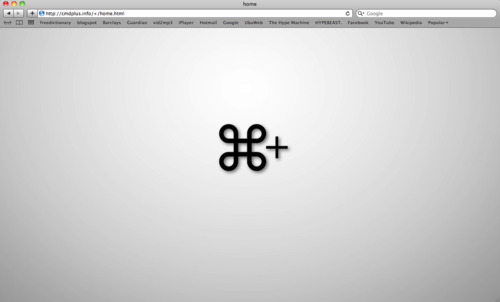Don't wanna be here? Send us removal request.
Text
Embedded Poetry ~ Glitch
The first in a series of publications exploring poetry in and beyond the internet, in collaboration with http://seanroyparker.com/.
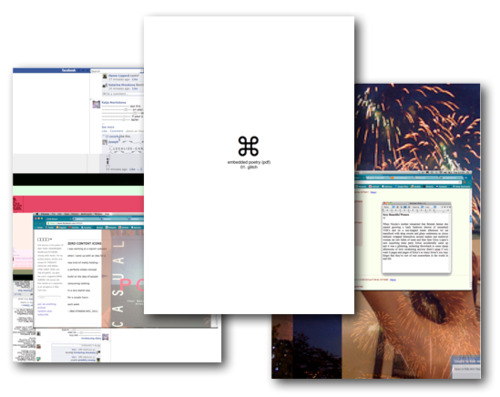
Including: Sam Riviere, Rachael Allen, Steve Roggenbuck, Harriet Moore, Jack Underwood, Jon Stone, Erik Stinson, Megan Levad, Harry Burke, Emily Berry, Sophie Collins, Philip Larkin.
Available here: http://bit.ly/y4Cy2o.
(temporary link if dl faulty - http://www.scribd.com/doc/81070179/Embedded-Poetry-01-Glitch)
#clinicpresents#embedded poetry#emily berry#glitch#glitch poetry#harry burke#internet poetry#jack underwood#megan levad#rachael allen#sam riviere#sophie collins#sean roy parker#SRP
39 notes
·
View notes
Text
Grace Miceli
In conversation with http://www.gracemiceli.com/.
I’m really intrigued and enthused by this notion of your ‘online teen following’ you mentioned in a previous conversation. Can you tell me more about this/them? Are they beginning to have an influence on your output?
My “teen following” definitely began when Tavi http://www.thestylerookie.com/ started posting some of my collages and drawings a little over a year ago. It was like the most cool & popular teenage girl on the Internet wanted to be my friend-and then so did everyone else. And then Molly Soda, who has something like 9,000 followers would often list my tumblr as “one to follow”. So I guess the support of those women along with the accessibility of my work & features on other websites helped to build the teen following. I’m very interested in the phenomenon of tumblr fame and I have not really had time to investigate- it’s almost always worked in my favor so I’ve been quite complacent towards accepting it I guess. There is no doubt that they have influenced my output, most specifically the mediums in which I’m currently producing- like the stickers. I started selling some drawings and paintings but the whole ordeal made me so uncomfortable (pricing my work etc.) and I know that a lot of people who are interested in my work are still in high school and aren’t about to start collecting art. But I want them to feel closer to it, and to view it not through the screen so that’s why I started making & selling the stickers and zines. One time someone online reblogged one of my drawings and said that “this looks like it was made for tumblr” and I couldn’t decide how I felt about that, but they were probably right.Teens online can be rather cruel as well, I’ve gotten way more upset over things that have been said about me online by 16-year-olds in Australia than anything that has ever been said to me in a crit by a professor or my art school peers.
I started my tumblr about three years ago, of course never with the intention of having any real audience beyond my few other friends who used the blogging platform. I was attracted to it because it was a lot more clean & contemporary looking than a site like blogger and there seemed to be a community more along the lines of livejournal (which I posted on everyday from the ages of 14-17).
Your work therefore has this really intriguing relationship with adolescence, in that you’re investigating your own recent history through this network of younger viewers (media users), situating your personal experience within a network of common experience; the result is this shared and sort of contested identity zone. Yet there still seems something subversive in implicating these younger audiences. Does this become a concern? Is the internet still sexy?
I’m definitely interested in trends, and how they function- specifically online. Making work that is largely viewed & consumed by teenagers definitely wasn’t my goal from the beginning, it just sort of happened and I think it has been somewhat successful in that regard due to my post-adolescence. I need/ed that distance in order to have a greater understanding of the young female/teen experience. I’m not sure how I view mass-media in relationship to the arenas I encounter online, there are definitely some parallels (maybe from some more popular bloggers) but expression/trends online seem to be more genuine at the root- probably due to the lack of $$ involved? And also I would hope that any sort of targeting I am doing has positive results, like encouraging some sort of creative action, I hope I’m not seeming too idealistic...
I think it does work on this level of the accessibility of art. I’m also wondering if idealism becomes pragmatic in this context. And this is reflected stylistically - I think there is an openness to your cotton-candy-primitivism. Yet again I see a darker side here though, explicit in the marijuana leaves or perhaps more subtly in the associations within the Sylvia Plath image.
I guess I implement slightly darker elements because I see them as being a necessary part of (at least my) adolescent experience. I started getting really into literature and creative writing when I was about 15/16 and my mother and teachers at school kept pointing me towards Sylvia Plath and Virginia Woolf; I think it’s interesting that the female literary “heroes” they teach you about all killed themselves. I had a probably very unhealthy interest in both of them at such an impressionable age because it creates this dramatic & heavily depressed archetype for a female creative that is really easy to get caught up in. As for the use of marijuana leaves, I see them as a symbol for “Whatever”, which is common theme in my work.
I want to sort of amalgamate that as a metatheme for this interview. I imagine any readers imagining us typing this on those really old grey computers with giant keys.
Zines, too, were an important part of underground culture in the 90s - is your use of them a continuation of an inherent DIY ethos? I’m thinking Riot Grrrl, subculture, and third-wave feminism, to throw in some wikipedia tags. Further, are your zines a reaction to ubiquitous blogging platforms?
I do think it’s an evolution of that. Because of my personal experience, especially attending Smith (with alums like Betty Friedan & Gloria Steinem), that culture has always been of interest and importance to me. Also I’ve spent a good amount of time working for the artist K8 Hardy, who is the ultimate mentor and artistic role model, she is engaging important feminist discourse through the mediums of fashion, zines, video and beyond in really powerful and amazing ways. A series of zines I made last year, New Age Visions, were closer to an attempt at an artist’s book or a catalogue for an imaginary exhibition- they were printed in full color and quite nicely, and presented work that was made by young internet based artists, and I wanted to explore the role of a curator. It was a project I had to invent on the spot- in order to convince the art department that I needed my own private studio space- but I think it ended up going well. I’m interested in experimenting with work that exists mostly online and seeing where its limits lie. I’ve made zines of my pre-existing work that haven’t functioned nearly as well as my coloring books or collections of poetry. So for me its maybe more about exploring the possibilities of what different forms my work is able to inhabit. There’s an element of personality and presence that comes with a zine that just isn’t translated through a computer screen. It makes the artist/viewer connection a lot more real to me when I’m writing someone’s name on an envelope and decorating it with stickers and including notes & temporary tattoos.
So you’d say there’s an equivalent to these scenes today / online?
Definitely! The internet has changed everything. I think that young women are still being active within their communities, but now that community might exist online (too). Blogs allow this young generation of feminists to claim a lot of space and converse and connect with each other despite physical location. The ability to disseminate information anywhere is really powerful. There are websites like rookie, jezebel & autostraddle that offer a variety of opinions on the female experience, often in relationship to pop culture and I think that’s really exciting how available that kind of information is today- for everyone. Vice Style posted an article last week about my “online feminist scene” that was obviously kind of uninformed & rude (but maybe a little funny), but I think the part that they missed is that what's really important for this young generation, especially females, is to know that there aren't rules if you want to identify as a feminist, you can dress femme, listen to pop music, shave your body hair (or not), wear make-up, do whatever you want, feminism is about celebrating your agency. What I see online right now is a resurgence and appreciation for the female teen (by teens and those of us a little older- and sometimes male) who is outspoken, brash and creative as opposed to wide-eyed, confused and helpless.
I like the idea of people being sometimes male. And I think gender comes into this. The internet has been a catalyst to increasingly diverse and fluid conceptions of gender, would you say you’ve encountered this? And if so, does your use of wigs and characterisation in your work reflect this? This has been very famous recently- http://www.youtube.com/watch?v=f9573kGBtuE. To me Nicki Minaj can be understood almost like a host personality, or character. Specifically here for these girls, although this logic carries beyond the meme, I’m sure.
For me, the manipulation of gender & exploration of characters starts before the internet and is in the style of and in reference to artists like Cindy Sherman, Alex Bag, K8 Hardy & Martha Wilson, it’s for sure a common exploration in feminist art. And gender presentation is definitely an interest of mine and I’ve explored it in a real-life context as well. But, I think what the internet has done is create a space where a lot more people feel comfortable with that manipulation and display. And for me its another platform to discover peers or other artists who are doing this. Perhaps someone isn’t going to put on a purple wig and go to the store, it’s a lot more comfortable to play dress up for your web cam and share the results with your followers. I think that identity is fluid and ever-evolving and I’m interested in how that can be expressed through physical appearance.
And (physical) location as well. To what extent do you perceive your website as an environment? Is it a continuation of your bedroom / studio?
My website, and online presence is most definitely a continuation of my bedroom, studio, wardrobe etc. I have always had an interest in making my aesthetic and cultural interests public- going back to plastering my school notebooks with images of pop-punk bands and teen heartthrobs. Instead of thinking about all of the things I like or wonder about, I would much prefer to see them actualized and palpable. I’m not sure if that desire stems from narcissistic or exhibitionist tendencies, but it’s so exciting for me to think about. A nice example of the translation from bedroom space to gallery space was a show I did at Smith with my two close friends/collaborators Velvet Teenvelveteen and Cody Hochman-Masback called “Apocalypse Party” in which we essentially made what we called a Teen Museum in which the gallery space was filled with pizza boxes, paintings of Beavis and Butt-head and pages from teen magazines as wallpaper, it was so beautiful.
I think your Art Baby Gallery project has this sense of a sort of transitional space as well. However, (and perhaps I’m slightly trolling), to what extent do you believe in the power of the internet to keep regenerating/creating unlimited space for new artists/projects?
Yeah I totally know what you mean, sure it could be argued that I’m just creating a multitude of digital waste but like with my use of the zine medium, I’m hoping to learn something from taking work outside of its usual platform like tumblr or facebook and providing it with a different timeline. Sure, someone might spend the same .02 seconds looking at the work on Art Baby as they would if I posted it on my tumblr, but I’m hoping the singularly dedicated environment of this website will allow for a slightly different viewing. I want there to be a more interesting relationship between work online and IRL gallery spaces- and this does happen, with the BYOB shows or Barmecidal Projects. Art Baby Gallery is the closest I can get to having a real gallery space right now, and I like thinking of it as a possible early stage model for a future project. It’s easy to get really frustrated by the amount of women who are celebrated in the art world or the amount of money needed to comfortably exist in the world, so I think Art Baby is my small & hopefully funny way of trying to combat that- with the resources that are currently available to me.
Would you call yourself a curator then, or is this just part of your extended practice?
The term “curator” seems to be used quite freely these days and I like that it has somewhat broken free from the professional museum/gallery world. That being said, I enjoy taking charge in the gallery setting when it comes to shows I am involved with (either with my own work-or at my place of employment) and it’s exciting to become invested in the work of other artists. But yeah I think my organizational compulsions combined with my general interest in my friends & peers work make it easy for me to dabble in curating- whether its online, in print or IRL.
Hi Grace, I’m Marta.
I think what’s really interesting about your work is the tension between the private and the public - for example, your drawings seem very personal to me but you also appropriate popular culture and thus their subjectivity becomes incredibly uniting on a fundamental girl power level; it’s like when blogs started replacing diaries (a historical moment, really) and collective anonymity became a source of reassurance, you finally realised that other people had similar ‘problems’ and didn’t feel as lonely anymore. Do you believe in the Internet as a space of real emotions rather than just emoticons? Or do you ever feel scared to upload something, even if it’s in the context of art?
(Also, I don’t know if you’ve seen Miranda July’s ‘The Future’ but this is quite interesting, also in the context of ‘Alien Grooves 2’ http://mirandajuly.com/news/6-30-11/).
It’s much easier to be emotional (and often to express yourself) on the Internet although online emotions and expressions poses an inevitable distance from “real life” emotions. My work has changed a lot over the past year, and before I started making work similar to what I do now, I wasn’t very present in it. I think that personality, which can come from my handwriting, or my physical presence in a video or photograph helps the work to matter to me, and then makes it more interesting to others. I want to be generous and I think that can happen when I literally “put myself out there”. I think that I’m always pretty conscious and would probably delete a video if I found myself to be too embarrassed or vulnerable in it, before I even considered posting it, but I am really working to edit myself less, and see what can come from those moments that are more honest and less planned out. But I do think that the screen creates a boundary of comfort and that I feel like I can look a certain way, or say certain things that I wouldn’t yet have to courage to do IRL in front of a live audience of viewers. And yes! I recently saw The Future, Miranda has been an interest and influence of mine for years, and I loved the idea of her trying to change her life by uploading dance videos onto the web in that film- even if she didn’t succeed.
(Bo here)
There is a scene in Bridesmaids where the main character Annie is incensed for her housemate for reading her journal. Her housemate responds, ‘I didnt realise it was your journal, I thought it was just a sad hand-written book’. I was thinking of this when looking at some of your drawings. You’ve used the tropes of something handwritten and private but published it on the net. Do you think by using felt tips rather than say gifs or windows paint, you are making what is private to you (and many girls forming identity) more explicit by placing it in this unboundried sphere? You seem not to be bringing the public into the private realm by the fact we can view from the comfort and anonymity of our home, but bringing your private and letting it explode onto the unchartered territories of the screen.
Hmm well I guess thinking about Marta’s question above (the blog replacing the diary) the notion of privacy is sort of consumed already by the web. While my drawings are definitely personal, they are intentionally made with the hopes of being relateable and with an audience in mind. I feel like any artist who makes work, and posts much or all of it online can’t claim to make work that doesn’t consider their audience, because I feel like such a large part of blogging and online art is about the community and the response it receives, even if it’s the small gesture of likes & reblogs. And I think my use of markers and handwriting is done in reaction towards my mainly digital body of work, which felt sort of cold and generic in comparison but were most easily considered “Art”.
If the eye is the window to the soul, is the webcam too? How are we meant to percieve your videos as a viewer?
Well I really only consider a few of my videos to be made in the webcam tradition, I guess that most others are meant to perceived as “video art”, due to either their found & collaged imagery or HD quality. But even so, in the videos where I am present, there is a consideration of the camera as a portal between screens as well as an element of parody towards commonly made & posted webcam videos.
http://www.gracemiceli.com/
*
14 notes
·
View notes
Text
New Sincerity
Review: Jaakko Pallasvuo New Sincerity curated by B.C. @ Beach London, 8-18th December 2011
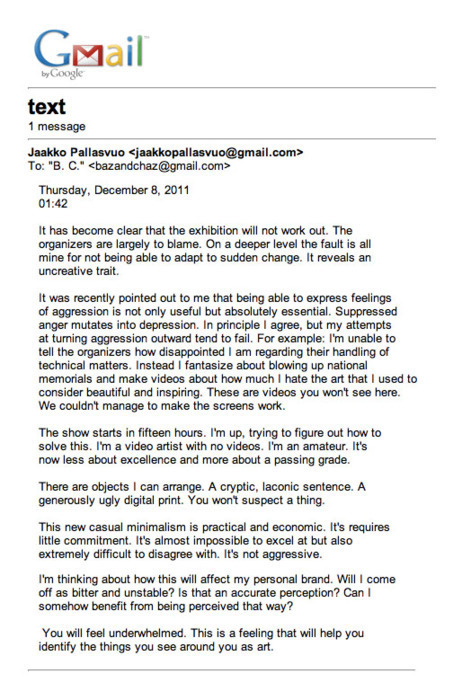
I wonder how the artist would have reviewed this show.
Jaakko Pallasvuo’s New Sincerity project presents a beautiful problem. For a start it’s manifestly neither; indeed the term itself has been discoursed for up to thirty years now. What’s more, the open source optimism of the notion has afforded it cult status in tumblr-led aesthetics. Sincerity seems a way of humanising emotionally detached image flow, the mantra seemingly: if nothing comes from without, we can reblog from the heart. Yet the very need to codify this exchange points to awareness of its location within a symbolic field, and the inherent structure of cultural capital within. To engage with this, to use New Sincerity as an artistic metabrand, complicates it entirely. Walter Benjamin has been woven through the project as a whole, what Pallasvuo is exploring is not the act of the artist revealing herself to a public but the aura thus associated with the artist-as-origin in this act. More simply, the aura of New Sincerity.
However Pallasvuo firmly understands this. The artist’s frustration at this show is her lack of control over this aura, the deconstruction of the personal brand; the leaked publication of this brand’s boardroom strategy. The abandoned pc monitors are the site where this antagonism is most evident. Stepping down into the exhibition, they form a void in the far corner, disconnected and empty as an old msn account, perfectly paired yet in solidarity with only themselves. Forced to contemplate the object, to fetishise the abject, we question our investment in yet another net inflected exhibition displaying photoshop squiggles alongside obsolete technology. Across the room, there is a noose.
Pallasvuo offers much more than this though. Working on no budget, and furiously last minute, neither artist nor organisers were able to procure the two identical screens specifically required for the installation. Or at least, they were, but the aforementioned pc monitors found were incompatible with the cables. Thus the monitors stand stubborn and silent, whilst the artist’s statement wails on the wall. Yet converse to the artist’s concern, these objects make for a more rather than less aggressive show. Passive yet far from impassive, the conflict here is one of the difficultly in translating integrated and complex conceptual projects into faithful sculptural entity. Yet it is also the realisation that an exhibition is much more than the physical document of a unified project, but rather a point of reference within a project’s development, a spatio-temporal location of its continuing genesis. Again I’m certain the artist understands this, this is New Sincerity part 2 and thus we can place it in time. What’s more, the ice cream melting at the fulcrum of the exhibition provides one of the most succinct visual metaphors for internet heterogeneity I think we might find. Thus aided by these carefully placed clues, the very banality of the two pc monitors compels the viewer to seek narrative beyond the object, aligning them more satisfyingly with the artist’s own process of understanding, a mechanism I see as at the heart of networked imaginative thinking.
That this is achieved through failure, and specifically technological failure, is interesting. On one level, it is something of a slip in the symbolic order by which we are given a clearer insight into the artistic process, or at least made able to believe more wholly in it. The artist may not have realised an ultimate vision, yet this lack of control liberates the viewer to insert more of her own autonomy, to dematerialise the artist myth. The viewer meets the artist half way, a collaboration which is for the most part successful because of the dystopia it frames; the artist as purveyor of unified truth. It is not technology that debunks aura a priori, but our shared and conscientious use of it. More simply, however, and perhaps more legitimately, it is in this failure that New Sincerity becomes truly sincere. This is not to critique the artist’s body of work as a whole, which offers of course the crucial context, but is more a celebration of uncertainty, an uncertainty through which the strength of the project has been revealed. The brand breaks; there is emotion, humanness within. And we can always watch the videos online.

Artist's impression of show, literally. source: dawsonscreek.info
New Sincerity
Jaakko Pallasvuo
8th - 18th December 2011
Beach London
http://www.jaakkopallasvuo.com/
http://www.bazandchaz.com/B.C./B.C..html
25 notes
·
View notes
Text
One Night at the Peckham Hotel // PRESS
10.12.11
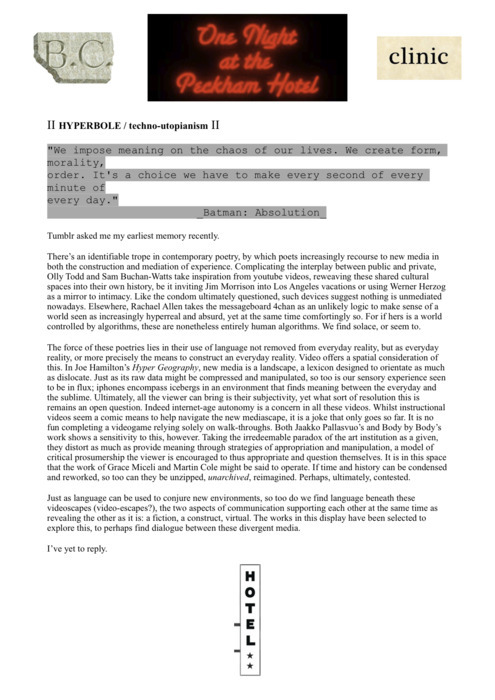

folder for hidden content ∇ ∇ ∇
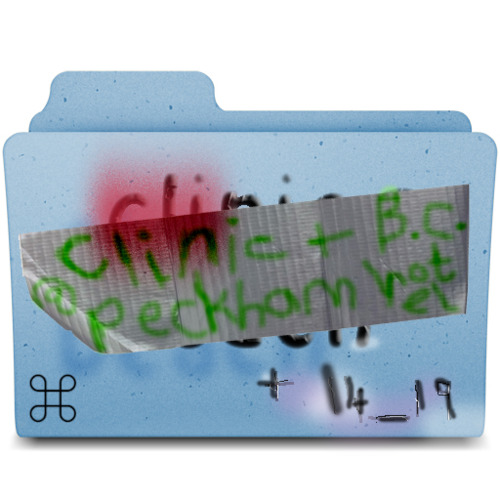
21 notes
·
View notes
Text
Towards narrative
Essay published in Pool, October 2011.
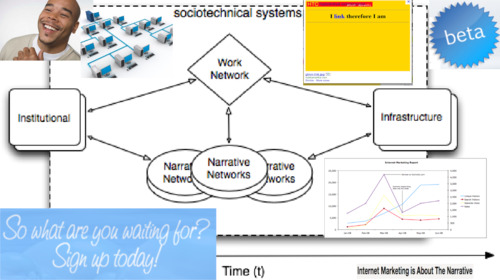
http://pooool.info/uncategorized/towards-narrative/
#pool#narrative#cmd#narrative contemporary art#internet lifestyles#character date#ben vckers#ed fornieles#dan graham#helen benigson narrative#ed fornieles narrative
19 notes
·
View notes
Text
Kari Altmann
HAZING - in conversation with http://karialtmann.com/
Documentation from Core Samples: Blackmoth.info Body Piercings, 2011
We talked previously about an emphasis on Tumblr in dialogue surrounding your work — would you say there’s a frustration in repeating yourself in conversations such as these? I’m wondering if there is a sense here of art reflecting the logic of the meme, and what sort of power structures this might in turn reveal. This first answer will probably be the longest... Repetitive questions are normal, especially with work that employs mystery, but maybe this ties more into your prompt below about scattered identity. Artists definitely feel pressure to be a branded thing, summed up by someone in charge going through a list of names and saying, “This artist makes this and that artist makes that,” and making sure it’s all diverse but similar enough to be presented as a teamed organism that communicates some pre-determined message. Looking at things like VVork in the past few years makes it clear just how much is being created in all the scenes about a lot of the same general memes and topics in the canon. It seems like an obvious answer to specialize in a way that stands out from that: by relying on that generality and striking some specific and disparate frequency, which can be a hierarchical game in its own right, or by joining then diversifying from the packs of like-minded peers you group with through time, which can also be a dizzying process. It becomes like a game of adding some unique vital ability to the organism in order to stay attached. Especially when your peer network becomes connected abstractly through the net, you can find yourself falling to the whims of the pack or the platforms out of efficiency. But of course art as a learning process needs to be exempt from the pressures of product and community at times, so you need to hold on to the freedom of being general, private, repetitive, or discordant. I’m captivated by that notion of unification and diversification within a group that forms based on attractors, detractors, and environment. Online, your morphology can actually go both ways and beyond.
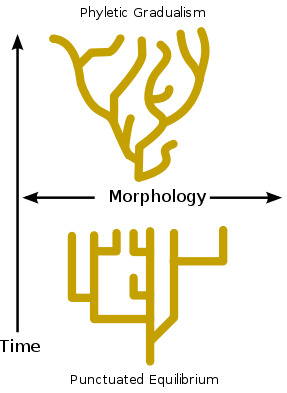
One trope the internet should help alleviate is this notion of the artist having a single “thing” that they do. When you’re in control of all the elements that brand you, frame you, and disseminate you, why not diversify that portfolio?
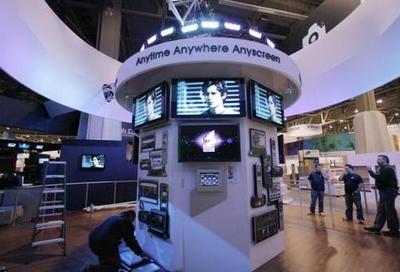
If you’re the one platforming yourself, it makes it much easier for people to see a fuller body of content in one clickable horizon. You’re not forced to put it all into one packaged showroom artwork, one moment, or one style that can be cherry-picked. Focus is still important, and distilling things down to specificity is a good way to get a message across, but branding yourself is something to be wary of more than ever. Those forces are so strong, now! I still go back and forth between generalist and specialist, which the internet allows, because your sites are the most meta frames. You can oscillate between anonymity and entity, and you can travel from context to context in a split second. The cross-hairs are continuously on the move, which is more congruent with how mobile lives have become. Being in control of your own aggregational destiny, so to speak, allows you to retain the final context, which can mean holding on to direction rights and humanity when the hype market wants you to be submissive and bot-like. It’s a constant play fight, but with that choice of authority you can actually afford to play a lot more. When artists become too eager to be objectified they are ripe for external plucking and branding, and the platforms are going to go where the “cost” is lowest, sometimes. The expectation of brand is also a somewhat inescapable force now, so for me the trick is to be this metabeast brand director and legitimately do whatever I want from day to day, then figure out a way to organize it all into its own teams later. The serial approach seems pretty natural for a process that provides in-real-time control. Creating, naming, and ordering cloud directory structures is also a creative act.
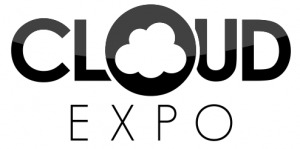
After getting hired to do so much brand interpretation and art direction, where your entire job is to locate some “essence” and then make sure it’s present in all of an entity’s visual and verbal output, it just makes sense to treat art with the same production schedule, especially with the research tools that are now available. That’s not to say all my work is organized that way, but it’s one strategy that still seems efficient. Even more efficient is to use a brand whose real estate already exists, but is hazy enough to allow for a much needed personal reuse that has nothing to do with the original.

TTOSHIBAA: 10,000 IMPRESSIONS, 2010 I still think of my “artist website” as the big piece or the real product in a way, though it’s 2011 and still no show has ever presented it as one. Curators and bloggers still tend to want to shop it for works a la carte, instead of presenting the full scenes or the networked teams. After some time you’re almost forced to start succumbing to the notions of the standalone product in order to get the message across in those contexts, and to lure people back to your site. Then it becomes a question of what people are experiencing in something like a gallery: is it all just a demo, a prop, or a sample for the real thing elsewhere? It’s an old topic but still surprisingly unaddressed when install time rolls around.
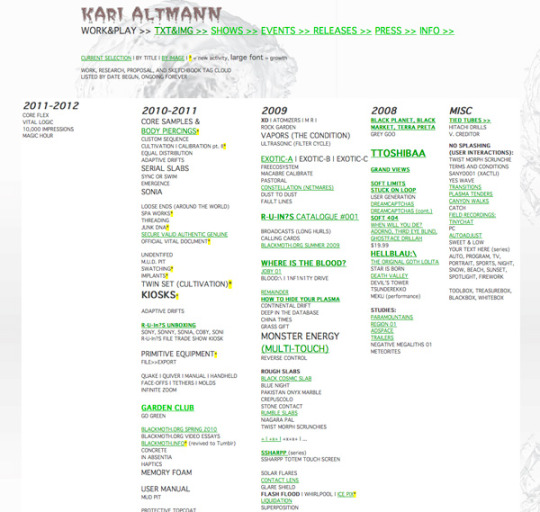
This is a result of the way art venues (and many art portfolio websites) still tend to work as product showrooms of cultural craft and artist names become memes that get reblogged around from different tastemaking sites. You can really watch all these exchanges from platform to platform and predict trickle down trends. It becomes easier online to see who is exploring and going deep, and who is just gleaning things from surfaces elsewhere. (The quirks of networked knowledge or culture communities are a whole other topic.) In the age of the reblog it becomes harder to identify primary sources. Especially when a lot of cultural producers are trying to recycle or rebrand while working in packs, you have to be sharp about who is authoring or producing an idea and who isn’t. What are the other actions and what kind of value should be placed on them? I am trying to be in control of my place in that, is all. There have been a few times when hype waves have tried to turn into undertow and define what my “thing” is for me. A lot of it has just become like tagging, and at times these contact emails seem like they’re running on algorithms. I mean who are you, Harry Burke? The way internet search services and similar content formulas are developing is really key. A lot of my projects are about reacting in kind.
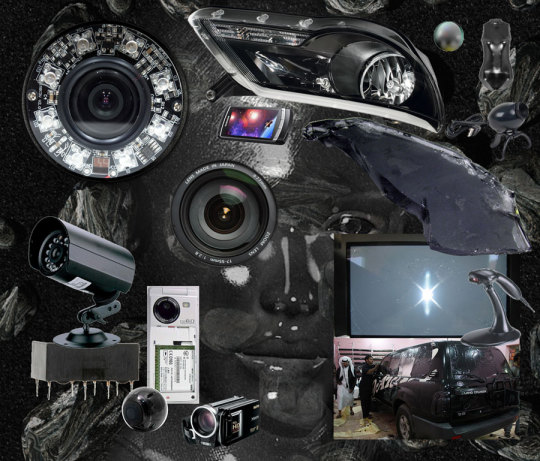
Excerpt from R-U-In?S Similar Image Haul: Magic Eye XD for K48, 2010 I’m game, but I’m trying to do more in-person, direct presentations where I can create more controlled environments, so that the exported aggregation of the internet is not too dominant. I really haven’t done a lot of shows or events where I’m actually in control, working with a venue I know very well, or resource-enabled. It’s all been extremely outsourced and translated, which I’ve tried to work into my approach. I want more “you had to be there” in 2012. This has all been talked about before and concepts like memes are obviously just how social things work already. Perhaps the difference now is the internet revealing it on such a large and instant scale that these patterns become a lot more apparent? Or that it’s now easier to control (and test) with one small gesture that becomes extremely amplified through an instant and specialized network echo? Any ident can find a platform, audience, and all the resources it needs to open for business in a few minutes. It can also be bootlegged or ripped off in an hour. Repetitive questions are a result of people’s entry point being one thing or another based on what’s been framed for them, as in what portal has been presented and vetted in some way by an outside source. Going to my site doesn’t always provide those concrete answers for a surface user. There is a big focus on Tumblr and the projects on it right now, because those are the easiest things to follow. You can go right into them, they’re super reblog friendly, and people are more likely to see what you’re doing on a platform they’re on socially like that than deep troll yourname.com directly. Maybe this is where I ask for this interview to be more like some promo questionnaire. Ask me my favorite color, or about where I grew up! Just don’t ask me more of the same questions about Tumblr and how the internet works? Or maybe I just say “it’s all part of the performance.” Then we post some pic you took of me hanging at the mall during our interview with lots of lens flares.
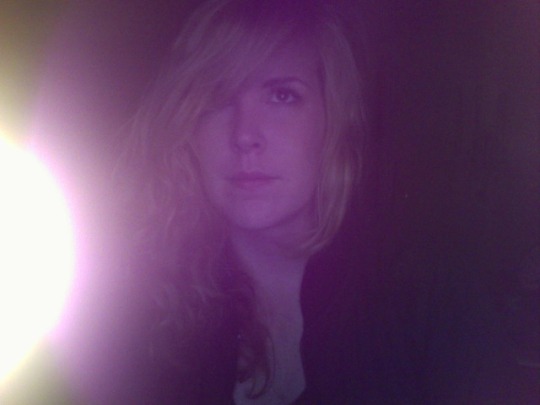
Pic of me at the interview with lens flare B-] Probably frustrating to be asked that as a first question, or in fact at all. But I like your response. (In response to external Skype conversation about webcam pic) You asked me questions about performed gender after seeing this pic, which you admitted was the first you’d ever seen. Did you think I was a dude before? It's not the first time. Dirk from JODI is among the people who have been fooled, even. I call this phenomenon "Karl Artman". Lol. Well not really, but I wasn't sure at one point, but only in the way like when you know you locked your front door but still for some reason you think you haven't and then don't know whether to check or not...levels of ambiguity. But that's pretty funny, if not maybe relieving on my part as well. I’m reading Sexual Personae right now, I’d highly recommend it. Really entertaining. To what extent do you perceive your online archiving as performative? Would this be altered if, say, the images were collated on a hard drive (following the model of a painter in her studio) rather than blogs? I’m wondering whether it’s upon publication that such research becomes an artistic act or if it’s something more integral, more process-based. Not so sure what you’re asking, here. Everything is also on hard drives, and people putting art online is not new? Are you talking about directory structure as art? That’s how more and more people are using their sites: as cloud mirrors of their hard drives with a few additional filters. In this way production and research are more conjoined, things are more live, and you can contribute to shared groups if you have something that doesn’t fit anywhere in yours. Or maybe this is in response to me explaining that my site is not always a showroom, which is the same idea....

I’m wondering how internet artist’s practice would be affected if they didn’t publish it online, at least not immediately. Of course they would no longer be ‘internet artists’ per se, but with so many people rejecting this term, it seems interesting to try and work out where the boundaries lie. I mean I don’t post everything online, and certainly not immediately. I guess a lot of it is at least listed, thumbnailed, or demo’ed in some way to add itself to the overall impression. Net-friendly stuff ends up online naturally but I don’t consider a lot of my work to be internet art per se. Since my site is the piece I’m really working on every day, I guess it all gets framed as that, though. I make everything with my websites in mind, even if it can’t properly be experienced there. It depends. Right now I’m actually more into 3d/4d modeling, plants, bike helmets, and constructing things from Ebay and CVS materials, but that’s a “thing,” too, computer artists trying to prove that they do other, non-computer things! There is still such a public stigma about technology, it’s surprising. I thought the internet hysteria was sort of dying in 2005. I guess I was wrong? Aren’t artists usually hesitant about “genrefication” ? The terminology of internet art, post internet art, art 2.0 v. 3.0, etc. is still a bit arguable. I like post internet because it’s like an annoyed reaction, but of course everything has overlap. It’s helpful to differentiate between approaches, but it eventually seems limiting because of all the bizarre things that get ascribed to the meme of it by others. A lot of talk about virtual art gets wrapped up in coverage of the platforms and mediums, aiming to place it all in a tech product lineage or the history of social media instead of what the art actually is and what the artist is about. It’s like seeing the work for its parts! This goes back to that generality and authorship issue. This is also what leads to the same questions over and over, the same articles being written over and over, as well as the same art pieces about technology being made over and over. Even shows are guilty of this at times: promoting the novelty of the system instead of facilitating the art that is giving life to the system. Everything gets flattened into this homogeneous idea of “content” or “participation” in support of some other framework and it can all get very gimmick-y. That type of feudal, territorial activity is wonderfully ideal for some things, but not always great for going deeper. Users are not all the same, content and art are not all the same and shouldn’t be referred to in a lump sum. Right? Are artists actually annoyed by those tags? Or are they just trying to make sure the terminology stays diverse so they don’t get type cast into a shelf life? The tag is usually already attached if they are reacting to it and genres don’t always get to choose their own name (IDM, WITCH HOUSE, SEAPUNK). I’ll go along with them if they apply, sure, whatever helps, but I prefer “metamedia” and “wi-fi #based” for now. They will continue to change as new topics emerge. Perhaps there is some sort of relationship here between the rhizomatic structures so commonly celebrated in online territories and their inevitable commercialisation, or commercial colonisation. In this sense the hackneyed genres that get picked up by the big rebloggers would be the commercialised nodes, reshaped and contested by their new traffic flow. (Genrefication as abstract gentrification??? http://www.google.co.uk/search?gcx=w&sourceid=chrome&ie=UTF-8&q=genrefication) And artists’ exploitation of these offers a model with which to consider their dynamics up to, even beyond, this point. I’m glad to see genrefy becoming a more official word ;) It’s an important question right now, not least because of America’s positioning of itself as an ideational economy, one whose aim is now to mastermind the branding and concept behind outsourced production. Jaron Lanier talks about this a lot, and David Graeber’s recent debt book is clarifying how payment is not “becoming” virtual but returning to a virtual state. Hypebucks are legitimate currency on the web. These hierarchical cultural battles and subsuming tendencies are, of course, completely mirrored or even foreshadowed online. To what extent do you see your artistic identity distributed / decentralised in your numerous blogs and online activities? Is this is a fragmentation or more of an integration? I feel like this is just a normal desire extended by technology throughout history. When you have that grand, master view of the network, you are free to roam, even from your tiny outpost in it. Power User! It’s a very imperialized lens, far beyond the mechanics of any camera. The roving eye now has its virtual extension, for which there is this dangerous mirage of globalized infinite zoom on an x-y-z scale. That process of generalizing and specifying finds an endless supply, here. There are trends tied to this, too, from having a really open and scattered online presence to a really closed and specific one. For me this depends on what I’m working on at the time, which is the biggest decider of my online mood. Somehow I feel like I’m typing this in response to a lot of social internet situations?? Like, “Sorry but I was busy,” or “It was all a part of the project.” Navigating the divide between these tiny specific audiences and the great beyond of being wifi-based can be intense. I have to say though, having an array of acting projects or identities is really helpful because it keeps whatever karialtmann.com is very free. Your artistic model seems to advocate a very proactive relationship with the information environment, a sort of humanistic enabling through information tools. Are you an advocate of network ecologies? The first issue of Radical Software (1970) suggested, “Our species will survive neither by totally rejecting nor unconditionally embracing technology - but by humanising it; by allowing people access to the information tools they need to shape and reassert control over their lives.” I wouldn’t say I’m an advocate, but my work is a response to its habitat.

Garden Club, 2009-ongoing Is there a certain logic to your image-aggregating projects? Perhaps you could relate this to your notion of “human search algorithms” and the fact that you’ve run into people online who don’t see the underlying structure. The logic is a vital logic. Each project is figuring out a way to survive in the hype economy, either by colonizing more content or diversifying itself, creating some emergent new sub-product, or simply outlasting its bootleg competitors by reaggregating them. If it fails to go viral it makes that failure part of its statement so that it can outlive the lack of favs or reblogs it gets, or it crafts a way to be part of a bigger statement. Basically by setting up these accounts I’m creating an attractor, an algorithm, that starts to build its own DNA sequence of parameters and set up shop via a results page. It’s sampling each post for the material and labor it needs to keep going, like a rebranding parasite. Once its parameters reach a certain critical mass, they can start to colonize everything. (It’s alive!) Even the R-U-In?S project at one point became about explaining itself, and it was a really brand-fatigued era. People who are somehow participating in it don’t always get it, but that’s a part of the territory. I have a background that’s found me in a lot of different creative communities, including online ones, and I’ve seen what fizzles out and what outlasts the social group. R-U-In?S for me was just a different approach than anything I’d been a part of before. The way it’s structured represents a trickled down, black-market-mutated global economy, one in which distanced research entities communicate primarily through their reproduced image-object goods and rebrands in a very public marketplace full of mistranslation, competition, ripoffs, forced diversification, and constantly morphing call and response that is not so obvious to a general audience who isn’t participating. It started as a looted artifact trade based on treating the results of search queries as anthropological records, and it’s grown to encompass all kinds of products and materials in its lexicon of critical currency. Each meme tries to build tiny empires through exchange routes over time that are either supported or abandoned. That’s why the presentations of it have leaned toward Trade Shows, Catalogues, Storefronts, Meeting Rooms, etc. An unspoken social contract develops between each entity as they become entangled. It’s like some warped surf club between fake brands. Even though it’s a project about misappropriation, I’ve had to stand up for it a few times as it gets aggregated into the wrong context. In some ways these arguments are a part of the project, too, because it’s all about researching those structures. In the end it always tries to aggregate those conflicts back into its premise, which forces the premise to expand again. Visual literacy can be a problematic topic in the blogosphere, especially for people who aren't privy to a behind-the-scenes understanding of media production. Of course, it also depends on a shared library of references, but that’s why the projects I have on Tumblr have this “most common denominator” element to them. They’re presented as seemingly obvious (obnoxious?) memes. That’s part of how they lure you into their back-end, and into working for them. You start to see them everywhere. In viral fav networks like those, you have to try to embed the criticality inside that lure, inside something that can become really commodified based on the ecology it exists in, so that even people who are mindlessly spreading it for all the wrong reasons or trolling it are still somehow working for the cause. No labor is wasted. It’s a hierarchical game, but it’s also part of the comment. You can get much better content when people are acting as the algorithms. You become each other’s search bots, voluntarily or not. Aggregational times, Harry, aggregational times! I like the logic of your responses to Gene McHugh, in that they highlight the mutability of the critical text, too often misinterpreted as rigid and invariable. Also that such texts have their own patterns of circulation, around the internet and in the more abstract intellectual sphere.
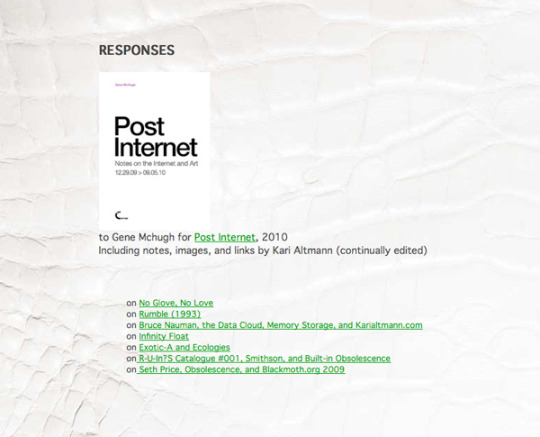
But what relationship should the artist have with their own surrounding critical discourse? Are there any parallels here with the instant feedback you must experience in your own online networks, both amongst your peers and in wider (internet) circles?
Gene’s writings on Post Internet were really just a performative blog of looking at things online and responding. In some cases he’d talked to me about the ideas beforehand for over a year, and in some he hadn’t. Essentially they are still his reads, his proposals, with some influence from me. He works as a curator so his texts reflect that, but it was also partially about the experience of coming across things on the internet and trying to figure them out. It stood out because it was actually considered and involved with a lot of the artists it covered. It’s funny that it became such a thing! There really isn’t much directly engaged writing going on about the things I find myself talking about with people on Gchat or at the bar because artists are usually focused on putting it into their work. A lot of posting online is being done by people who have just gone to three urls and a party, so it’s extremely speculative. That’s to be expected, but when that’s all that is ever documented in writing about an artist’s work, those blog posts wind up circulating around, getting printed, and being treated like primary documents when they definitely aren’t. In the case of art online there’s often still a lot of basic presentational framing missing. When filmmakers or musicians release a project, it’s quite an ordeal. There’s a ton of context and it’s very clear what the product is and who is behind it. Those things can be missing in a process aiming beyond a product method, where people assume anything they see on your site to be “it” and begin writing about “it” in the same moment. Product-oriented thinking is still so engrained. I mean at this point most artists are just an email away so it’s assumed that people are going to open up a direct communication line with questions. Talking about it all is very easy, but posting it online becomes a different beast, partially because of the nature of online content and comment section polemics. Whatever press or criticism is, is now bound up in the same muddy arenas with everything else. Plus, you know, you don’t want to contribute to the problem. Trying to create some kind of respectful record of very deep currents takes a lot of time and care. Is any blog the end-all-be-all or the final word? No. There should be a lot more people doing what Gene did, if they’re interested. I consider my Tumblr accounts like publishing outlets, but things that aren’t text-based or book-formatted aren’t always recognized as a form of discourse. I try to show them as documentary films, too. Gene was happy I posted responses because he meant for his blog to be a conversation-starter, and was surprised more artists didn’t do the same (so he’s said). Having something to bounce off of and respond to is really helpful— for instance free range interview prompts like this one with no word or content limit. I wouldn’t write about a lot of these topics normally because I’ve heard them talked about so much, but I forget they might not be as accessible as they could be. So I don’t mind the repetitive questions too much. That’s why I’m interested in projects like Gene’s and others that are more collaborative, because they actually assist artists in the research and citation process, which aids them in representing themselves instead of contributing to the pattern of outsourcing the artist into oblivion. Writing for me is usually post-mortem for when a project is over, and I still don’t think that everything needs to be accompanied by texts, nor do I think any artist should publish those texts until they are ready to do it at a level they’re proud of. In the meantime, there is another big job on deck. You talk about instant feedback but just as an fyi, that doesn’t always happen. Because things connected online are very geographically distanced, even talk about each other’s work can be just as speculative as a result of the lack of contact. When artists have access to each other, they don’t always use it productively, and that’s contributing to the lack of substance. You can only get so far through emails or vague notions of one another. The grant to give would be something that gathers everyone in one place, say, for the big 2012 party. Just a thought! The internet or any kind of scene recognition can actually make people more paranoid about sharing ideas and expressing reactions as much as it can facilitate it. There seems to be this assumption that any productive artist is part of an equally rigorous critical peer group, and that they’ve had tons of practice arguing out all of their ideas. Everyone still seems to assume that whatever’s happening in this area of art is very distanced from them, as though everyone involved is some mega celebrity with their own separate lives...but surprise! You are a participant in something still relatively specific, small, and blossoming, and it might be more up to you than you even realize. You are not outside the network, you are a node. I wind up explaining this a lot: it’s up to art venues and others in the audience to commission (or at least request) a lot of the ideas listed on the site into final presentations, and it’s up to you to ask the questions you want answered. It’s not that there is no thought or conversation going on about this! It’s just that it’s not always done justice or publicized properly because of that haze. [brands heterogeneity / state. work as an exploration of flux? -> relation to location / lived patterns? -> (how) does this relate to (e-)waste?] ^ Are these questions you’re working on? I guess there aren’t many questions specifically about...what, personhood? Which might be nice to tap into... As I was saying before, artist interviews tend to be really meta online, almost to the point of being droll? I’ve just finished typing out two different interviews, both of which found me talking about brains in jars...
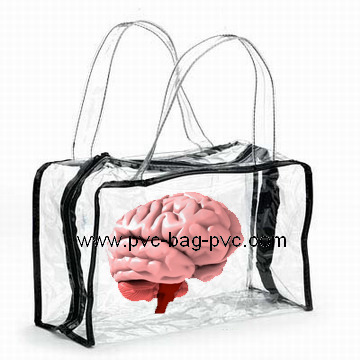
!! Perhaps I’m really guilty of that. Or maybe the internet leads quite naturally to abstracted modes of thinking. It’s already proven that our cognitive abilities are being reshaped by new media, the obvious example being increasing disability to recall proper terms, with emphasis on process (the google search) subduing the actual remembering. Even that example sort of supports itself. Thus I guess we shouldn’t overlook the virtue of conversation around something as seemingly arbitrary as a favourite colour. I can’t even think if I have one now. Yeah the questions get so concept-driven that there’s this pressure to make it that primary document. I just went through this and deleted even more because I find myself using interview prompts and gmail faq’s as an excuse to start branching off into an essay, but those are a different format with a responsibility to cite and reference. I want to avoid that pressure when I’m just typing a conversational Gdoc to someone I don’t know, you know? Not to mention the need now, at the end of typing, to add a lot of interesting links and content, like that Delicio.us TL;DR pressure...I’ll go through now and add some, plus those mall pics. lol. How much of Kari Altmann as a person is manifest in your presence on the internet? Is the personality of the artist something that appeals to you? Right now I’m really into artists’ backgrounds and personal behavior. I want to know all the gossip! Obviously I’m interested in networks and power relationships...I love a good face-off. I’m always relieved to find out all the complicated, torrid social histories that parallel the ones I’ve been a part of in all these scenes. I would much rather be a part of something where everyone cares so much and is going through all these turbulent, deep, and weird things together than faking it or acting super blank. Or even worse— playing it safe, standing for nothing, or doing nothing at all. It’s proof of vitality when there is friction and heat, and that’s what makes those sparks, you know? The alternative is a group of really afraid people doing things that are ultimately forgettable and lost with time. Nobody learns anything. As for me, I’m just available enough online, and it’s about 15% of the picture. I’m sure there is a personality tone that pervades a lot of my online activity. It’s part of my approach to the internet, though: I have slumber party mode and then CEO death cubicle mode. Isn’t this all a video game anyway? http://uncyclopedia.wikia.com/wiki/Internet_(video_game). Final question: What’s your favourite color? Tempted to answer with flourescent beige...but for the sake of fav colors and artist backgrounds: there is a certain color scheme that I’m really attracted to, one that can be described as “Crepusculo”.
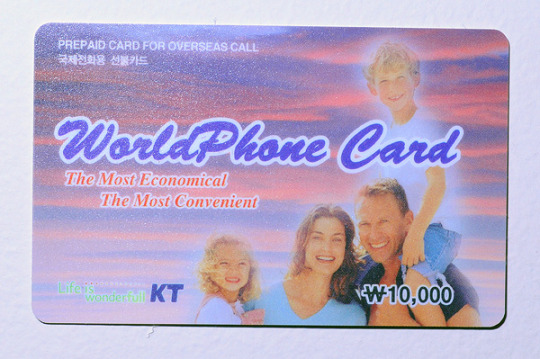
Korean WorldPhone Card, bought in Seoul in 2007
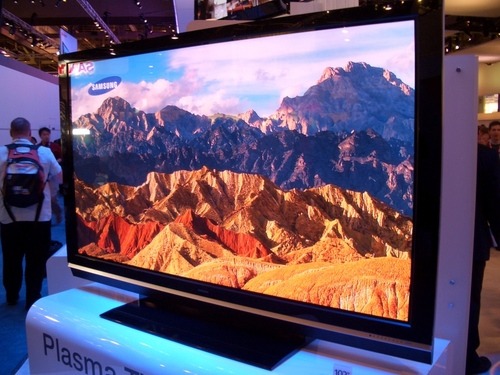
Samsung Plasma TV Trade Show Image I’m approaching this as an art direction, but I think my attraction to it is twofold: 1. The range of colors makes for really rich images which obviously seem more “valuable.” 2. It’s embedded into palettes that surrounded me growing up in Texas, which are part of a larger sensation. Not just the muted soil tones of the Silicon Prairie land and the sunlit shades of wide blue skies over superflat horizons, but also the pink bricks of superluxe houses, the concrete of highways and spread out telecom companies, and the mix of dusty, desert-like air with super glossy big-money consumer culture. One of the reasons Texas attracts so many start-ups and franchises is quite literally because of the land: there is tons of it, it’s flat, it’s dry, it’s cheap, and there is no state tax. Not so great for plants and animals but ideal for corporations. Ironically it turns into clay or bedrock pretty quickly as you dig down so things have to be built on very shallow foundations; very few of these developments go below surface level. Marble malls, sparkling limestone Mcmansions, leather Lexus interiors, ice cold air conditioning, tons of slippery blue, black, and gold glass, and lots of franchise-y indoor l.e.d. lighting schemes from a city that was absolutely booming and crashing in the 1990s and early 2000s. It gets more and more desert-like in memory, actually. It was this strange mix of liquid and arid, like a coating of luxury conditioner over this barren frontier-type landscape. It felt geological and synthetic at once? Just something very immediate and chemically enhanced placed over lands that felt very prehistoric and reptile-friendly. The fantasy-image used to plow the earth, you know?
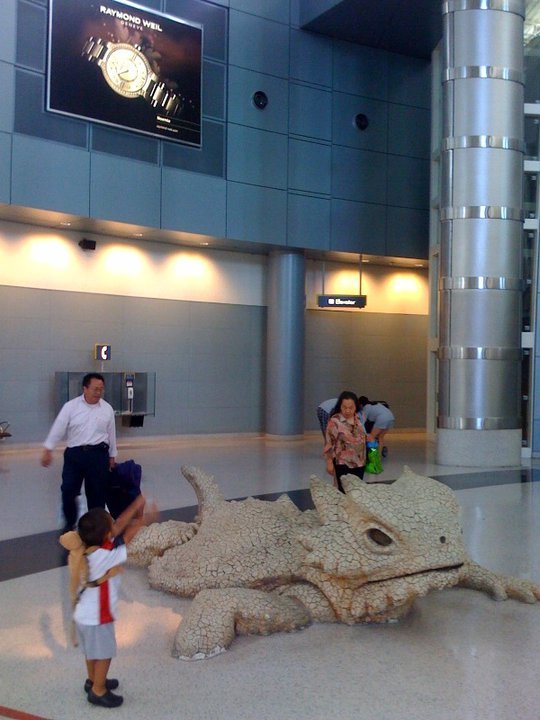
Image from BLOOD:\ (MOBILE UPLOADS), taken in Las Vegas, 2010 Every place has its own flavor of this. The only other places I’ve been that have moments of the same aftertaste are more recently developed parts of L.A. and Las Vegas, both of which are a total mindfuck, and this is part of my fascination with seemingly similar landscapes and cities I’ve yet to visit like Dubai. This is also a color profile that cameras tend to enhance under generic white balance settings, and one that photographers aim for at “magic hour”, which is a block of time when the outside light is at its most pornographic. It’s especially attractive for product images that need to sell that idea of nutrient-rich luxury, or for people shooting in HD.

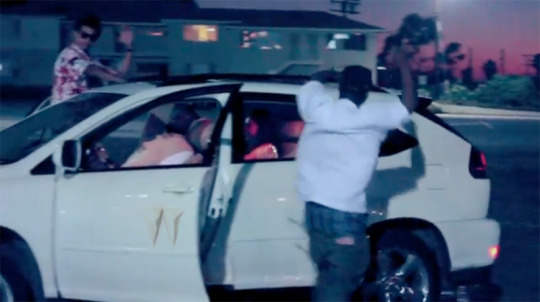
The places I’ve lived since then have all been extremely different, by no accident. This sort of material was the impetus for projects like blackmoth.org and blackmoth.info, which are interested in locating an earthbound geological materiality in the formations of images left behind by the climes of media production, a method which finds its niche among projects by Heim Steinbach and Robert Smithson. Richard Kelly is also a huge comrade.
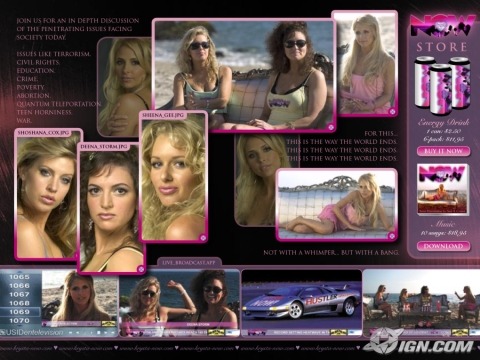
I think the project has ended or at least hit a stopping point with Core Samples, and on Tumblr it’s developed a nice network of similar content.
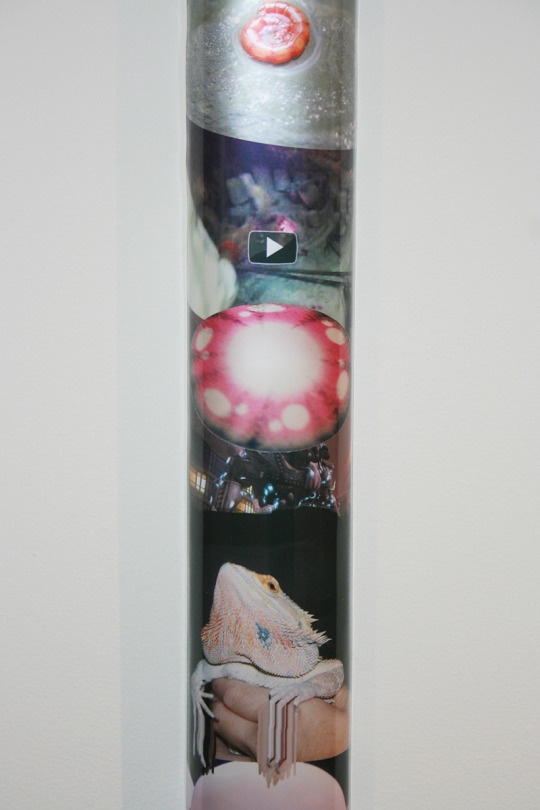
Documentation from Core Samples: Blackmoth.info Body Piercings, 2011
*
http://karialtmann.com/
184 notes
·
View notes
Text
Body by Body

Body by Body will be in conversation with cmd for the duration of their current exhibition at Important Projects (http://importantprojects.net/index.php?/future/body-by-body/). This can be viewed publicly at https://docs.google.com/document/d/12pLrqeUtlcekATYEK8ZKdSvgnKDbYb-0P0plXH3AvV8/edit. Please email [email protected] for permission to edit. (All requests will be granted).
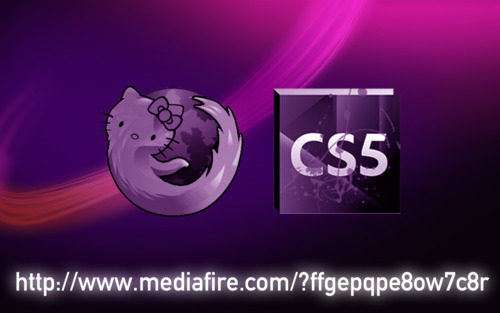
3 notes
·
View notes
Text
1:1 Interface Clothing
Short trendcasting report written 4 Currency Zones of the Future 4 Recreational Data 4 LuckyPDF 4 Frieze Art Fair 2011.
Limited edition @ http://www.luckypdf.com/slide/index.html (RD).
Get them whilst they're still hot.
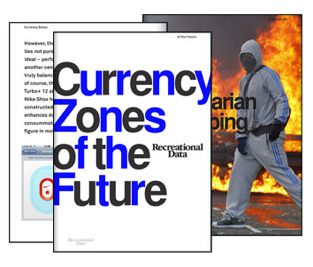
0 notes
Text
PARKER ITO / SARAH ROSAMOND
In conversation with parkerito.com and, ultimately, Sarah Rosamond
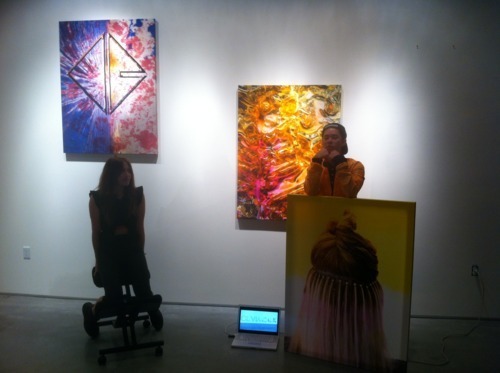
Somehow I feel it’d be interesting to begin by focusing on your third party representation (bios/intros etc) across the internet. To what extent do you see this diffusion of yourself as part of your artistic output/identity? Currently I’m in West Sussex. I go on YouTube and search “whirlpool”. This is the first video that comes up - http://www.youtube.com/watch?v=sx8vA9jBEFk. I think whirlpools are a good metaphor for the flow of information on the Internet, and I think searching “whirlpool” on YouTube is a good example of this metaphor in action. This video has over 9 million views. I had one upload on YouTube that had like 10,000 views. It was a video of a giant shit that wouldn’t flush down the toilet. It got flagged and removed. This guy named Brooklynsfinest2007 kept messaging me telling me he’d pay me to shit in his mouth. I asked him what shit tastes like, he said “it depends on what the person eats LOL.” Why does this video come up first when I search “whirlpool”? Why does this video have over 9 million views? Does this video have 9 million views because it comes up first in the search, or does it come up first in the search because it has 9 million views? Information in the whirlpool (Internet) spins around and around, gaining context and losing context. The most visible place is the center (even though this is probably the shittiest place to be in an actual whirlpool). When and where to drop your information in the whirlpool is really the secret of the Internet, and big corporations pay tons of money to have people tell them this shit. The whole Rebecca Black phenomenon illustrates this beautifully. I dropped a bunch of shit in the whirlpool back in late 2008 / early 2009 and it’s still floating around. This leads into your next question and I’ll answer it here, but you should still leave the question in the same place. I’ve always talked about (or been talked about as) being from California, and that influencing my work. Or maybe actually the Internet influenced my decision to make it known that I was from California. I grew up in Orange County, right next to Huntington Beach. Huntington Beach is known as “Surf City USA”. I’ve referenced the Beach Boys several times in projects as a way of referencing an idea about a lifestyle. In my mind this surfer/California lifestyle paralleled my projected Internet lifestyle. The Beach Boys named after and based their image on the surfer lifestyle, even though only one of the Beach Boys could actually surf (I think it was Denny). Even though I’m from California I don’t really like going to the beach, and I’ve claimed to be an Internet expert / professional web surfer in other interviews, but maybe I don’t know shit about the Internet, just like the Beach Boys didn’t actually surf. One of the best interviews I’ve ever read was an interview about Maurizio Cattelan in Wallpaper magazine. Instead of interviewing Maurizio directly they just asked his gallerists, curators, and friends to speak about him. Your Californian heritage is often emphasised, a detail that might seem paradoxical to some given the boundarylessness of the internet. For example, thecreatorsproject: ‘L.A.-based artist and internet wunderkind Parker Ito isn’t defined by the confinements of geography, as his stomping grounds can be accessed virtually from any computer.’ How important is location / identity to you? ↓↓↓ Whirlpools are natural phenomena, upon which, once developed, we as humans can have little effect. Do you think we are as helpless when it comes to controlling this virtual whirlpool? I’ve phrased that somewhat pessimistically, but it would be interesting to consider any positive outcomes of this information flow. Further, although your above answer accepts a level of authorship over at which point we drop information in this whirlpool metaphor, there seems to me just as many instances in which we might add or create information unwittingly as part of our daily interaction with the web. Even from what books or games you browse on amazon you are creating information about yourself, which is then part of the public domain with the potential to effect how other parties interact with you. http://en.wikipedia.org/wiki/Streisand_effect I have about 10 email accounts. Some of them I use only for signing up for porn sites. I’m pretty sure if you searched one of these email addresses in Google you could see some of the porn I’ve been looking at. In essence we can’t hide from the accountability of our actions. I think there’s the potential to perceive something weird and fatalistic in this, but we should really fight against seeing the big corporations - the metanationals - in this light. To what extent do you see ‘Parker Ito’ as a brand? The top google result for ‘whirlpool’ is a home appliances company. If I say “yes I’m a brand” people might think I’m full of shit. Or the above statement reaffirms my status as a self aware, transparent, brand. Or nobody has figured out that I’m just a dog yet. Lol. I find your Metro Gallery interview particularly interesting because it reappears across the internet in some kind of obscure places. http://currencytradingexchangeguide.com/691020/chillin-w-parker-ito/ http://guitarlessonforyou.com/2011/06/chillin-w-parker-ito/ http://www.sexproductsell.net/chillin-w-parker-ito-art-visual-art_17359 Personalisation of the internet has become a popular topic of discussion over the last few months. Yet your quotation of others to describe yourself coupled with its then saturation of your google search seems to point to a depersonalisation of the internet, a sort of outsourcing of identity. To what extent is this a concern of yours? Can we see these concerns reflected in your Most Infamous Girl project? This goes back to the whirlpool idea. The Internet is all about access to information. But in the way that we’re all creating and dispersing information about ourselves, the Internet is also about outsourcing of identity. If you don’t know how to outsource your identity, you don’t really know your identity. Recently, ‘when Nestle wanted to find out more about what Australians talked about in the kitchen, it created a 5000-strong online community and began a regular, two-way conversation with grocery buyers’. And often, when people want to know where they are within their social circle, they create a ~500-strong online community and begin a regular, two-way conversation with friends. Most of the time this is harmless. Maybe the Parked Domain Girl paintings take this idea to its extreme, highlighting this conflict over Hannah, the ‘Attractive Student’s image / identity / personality. As Artie Vierkant said, ‘Parker’s Parked Domain Girl paintings involve him versioning the same jpeg over and over until his personal brand can overtake or become synonymous with one of the most widely-circulated images on the internet.’ I don’t really know how much control I have over it all. Maybe it would have been more appropriate if you answered this question for me as how you would think I would answer it, I guess so I could find out.
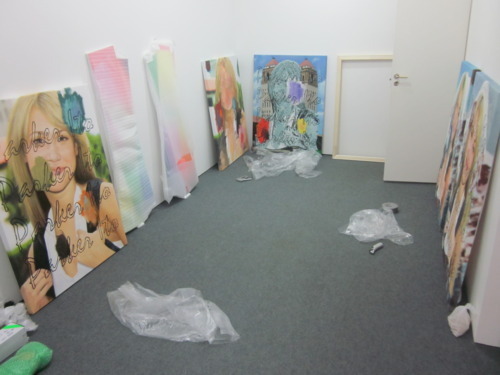
Should discourse around your painting consider these ideas? Could the whirpool be used as a metaphor for the wider flow of information in general, beyond the internet? Perhaps your use of paint is a material reflection of this. To consider flow of information in terms confined by the Internet seems wrong. Often people introduce me as or call me an Internet artist, yet I’ve made mostly paintings in the last two years. Maybe discourse or whatever should start there. It’s also funny how I introduced this whirlpool idea in my first response, and we’re still talking about it here, it’s got caught up in it’s own mini-whirlpool in this article. Which is why maybe I have a concern over leading this notion of discourse too authoritatively, I don’t know whether that’s good or bad. JstChillin created a centralised platform for a number of convergent practices, and, for the uninitiated viewer, thus becomes an important resource. To what extent did this project help create a sense of community? Further, how was this community then effected by its culmination? The other day someone was telling me how READ/WRITE was kinda like a degree show, an international degree show with everyone you wanted to go to school with. In my mind the show was quite symbolic as it clearly marked the end of something, and I think this transcended the project. I made a status update about this right before the show that said something like: “Having a solo show and selling work is cool, but my all time fav. is having a group show with a bunch of your friends that you met off the Internet.” Actually the person that was telling me how the show was like a degree show was Sarah Hartnett, an artist who was in the show, and also my current GF. We only met because of the JstChillin show. So maybe our relationship is an extension of that project? That’s a romantic notion, but it’s probably not that true. Some of the artists in the show have told me that they met a lot of people through JstChillin, and I hope we were able to facilitate some sort of dialogue. There was a lot of good work that got made, I’m really proud of what we were able to do. We had tons of fun, and I got to become close with some really interesting people. I’m not really sure how to answer this question because I feel too close to everything and that clouds my judgement. It felt like there was a lot of energy behind it, but at the same time it almost feels like it never happened, it wasn’t that influential, just good timing. I’ve seen like two articles in the last 2 weeks that speak about online galleries and how they’re so “radical”, yet none of these articles mentioned JstChillin. But none of these articles mentioned Netdreams and Netmares, or Club Internet either. What about online collectives functioning to the same end as Warhol’s factory in the ‘60s? Warhol was kind of using people though no? The factory seemed more about hype and excitement than actually production. This idea that if you’re at the center you’re important by default. Are you saying that I’m Andy Warhol and JstChillin was my “factory” Not at all, I was more thinking about how people would gravitate from around America to this kind of environment, as a way of escaping whatever dull suburban or domestic reality they were trapped in. The internet offers kids the chance to ‘escape’ their homes without even leaving their bedroom. But maybe this isn’t so much true of an artist’s practice as certain forums where just normal weird kids congregate, or perhaps some youtube comments threads where people find a voice or a subculture. Maybe there’s a more accurate comparison between online collectivity and broader environments such as Greenwich Village. I like the Montparnasse parallel because it feels more romantic. Object sexuality is quite interesting in this regard. At the time the film “Married to the Eiffel Tower” was made object sexuality was quite a rare thing. The film follows a group of women who are in love with objects, but because of the Internet they are all able to meet up and hang out. Well now this shit gets talked about on Tyra Banks. In essence the Internet has maybe destroyed counter culture? Everything becomes normalized and consumed by mainstream culture so quickly. I can’t imagine what porn will look like in 5 years. Will it even turn me on anymore? Ironically the art world still seems to be afraid of the of the Internet, or not equipped to handle its full potential. There are moments of transcendence, but if you don’t have an object based practice people aren’t that excited, and even then people still want to touch the stuff. Sadly, you still have to network as much offline as you do online. Hopefully this will change soon. I feel like I’ve said that so many times that it’s become a Parker Ito cliché. I think the most rewarding thing about being a part of an insular community is that you know who your audience is, and that fosters some really great dialogue, and giant circle jerks. Your new jpegs exhibition seems to have been structured around an emphasis upon the post-medium condition. This is a notion that has gained considerable momentum over the last ten years, with commentators such as Krauss emphasising a state in which media has become so conflated that the artist must strive to attain a purification of art itself. In what way does the post-internet post-medium differ from that explored in the institutional art world of the last decade? Do you see this as a node at which post-internet practice can align itself with the art world at large? In my social circle I have two main group of friends - my skateboarding friends, and my Internet / art friends. These groups rarely interact, with the exception of them maybe liking the same thing on Facebook. Several of my “friends” on Facebook are people that I went to high school with and haven’t really kept in contact with (except for being their friend on Facebook). I often wonder if they see what I’m posting and think to myself “do they care, or is this just annoying them”? I have a really hard time explaining what I do to non-artists. People always say to me “what’s your medium?” Most of the time I respond with “Internet”, but that really confuses them. What I’m getting at is that time in itself creates new identities - one of my favorite past times is coming across the nerdy girl from high school who is now a hardcore socialite hipster. Some people know me as “Parker Ito skateboarder”, some people know me as “Parker Ito annoying Facebooker”. But in my eyes the primary goal of a post-medium practice is that the form always serves the idea first. Is gender a significant aspect of 'The Most Infamous Girl in the History of the Internet'? Notions of sexuality have featured prominently in discussion of Warhol’s Marilyn series, of which a parallel has been made since Gene McHugh considered the relation of the two; should such themes form a part of the discourse of your work? Perhaps traditional conceptions of gender and sexuality have changed in the historical interim, aided and abetted by technologies such as the internet. For a long time art about identity seemed really cheesy and boring to me. Then I realized all of my work was about my identity, but a new kind of identity that is almost a non-identity, that has occurred because of the Internet. I make work under myself, then as Deke McClelland Two, and then I’m doing this new project with Sarah Hartnett under the name Olivia Calix. So I guess I’m exploring these different identities, different personas, and different sexualities. The Parked Domain Girl paintings are very perverse, but at the same time that image is so watered down and WASPy. Deke 2 is totally hypersexual, basically misogynistic at some points, and more “urban”. I’m big believer in multiple personalities, that’s to say in our desire to have multiple personalities. It’s also why google+, I think, had the potential be successful. Although perhaps there’s something interesting in how you define between multiple personalities and multiple identities. Can you talk more about Olivia Calix? Maybe introduce a bit of what that’s going to be? Most people have multiple personalities. I was born under the star sign gemini, the twins, so I believe my personalities to be quite extreme. At times I’ve had people describe me as shy, quiet, and aloof, while at other times I’ve had people tell me that I’m intimidating, loud, and obnoxious. The truth is probably somewhere in the middle, and also depends on my mood and what substances I’m on. I didn’t start drinking alcohol frequently until about last fall, and I still only really like drinking Bellinis and White Russians. Alcohol and drinking was an important business move for me, as one of my professors once told me, “more art business goes down in clubs and bars than anywhere else.” I spent three weeks in New York this year and I was really fucked up for about 19 of those days, but I think this is what New York does to people anyways. With the aid of technology it’s a lot easier to curate multiple identities simultaneously and really sell them. The movie “Catfish” would be a really obvious example of this. I used to get really depressed when I would meet someone AFK and their personal brand didn’t live up to the hype, but then I realized that that’s one of the new ways we’re experiencing these technologies in our daily lives. At a certain point I decided that I wanted to exhaust this Parked Domain idea, just really do it for so long that it became annoying. I’ve decided that 2012 is going to be the last year I produce them, this seems appropriate as the world might end. I’d like to do a “retrospective” show of the paintings as well. Somewhere through the project I started getting really bored of myself and this certain kind of thinking. For me the Parked Domain paintings are like “conceptual” works, they’re very rigid in how I approach them. I’ve always tried to tear down the personal brand that I’ve created in my previous works. Like I see myself as these mini movements and I’m always reacting to the prior one. In 2009 I made all Single Serving Sites primarily based on video work, while in 2010 I reacted to this by returning to painting. So it was really obvious for me to do the Deke 2 paintings, because I didn’t want to disturb the brand of “Parker Ito Parked Domain Girl”, but I wanted to do something to get myself out of a certain kind of process and thinking mode. Deke 2 was a return to material exploration and real hardcore formal painting decisions, really hands on, studio based work that I would describe as “hot”. I hadn’t started painting back into the parked domain paintings yet, and it was the first time I was touching oil paint in maybe 4 years. It felt really refreshing. The full name of the alias is “Deke McClelland Two”, which is a name based on the Photoshop guru Deke McClelland. The personality of Deke 2 is kind of Martin Kippenberger meets Lil B. Keith Boadwee, a former professor of mine, responding to the Deke 2 paintings once said, “Fuck I can’t even watch you paint. You really do not give a fuck at all.” I thought to myself, “Jesus christ Keith, your most famous works are you shitting paint on canvas and you say I don’t give a fuck about painting? I must really be onto something.” To clear the air though, I really love painting, but am really interested in the cliche’d “painter hater” position. Paint FX was also a project that I tried to push as conceptual for a long time, but latter realized it was more radical to just say it was completely formal. In hindsight I’m really proud of Paint FX, our output, and our sensitivity to software. Olivia Calix is somewhere in between Deke 2 and Parked Domain, it could be read as a formalist project, but it’s also becoming extremely complex because of the nature of its context. Maybe even creating binaries like “formal” and “conceptual” is stupid at this point though. Olivia Calix started out as a critique of an aesthetic that could maybe be associated with the 3rd wave of “Internet Based Art”, or Tumblr era. This is when Internet based artists became less nerdy and more hipstery. You know this aesthetic looks really sexy, and that’s why it’s so popular, but there’s just so much of it online today that it starts to feel empty. The project is also responding to some discussion about female visibility in the online community, which a female / male duo creating work under a female alias could be a strive for some post gender bullshit. Ultimately the project Olivia Calix is a critique of ourselves (the artists), because we can’t really escape our actions like we want to. Either way people are going to click the “like” button on Facebook. This may seem like a really insular conversation, but there’s also this goal to create a kind of taste algorithm for 40 somethings and above (the people who run the art world). Recently though, I’ve become extremely interested in the parallels between Surrealism and Tumblr and I’m thinking about a kind of neo-proto-hipster-surrealism that takes the form of object fetishism sculptures and installations based on prevalent jpeg aeshetics aided by Tumblr personal taste filters. One of the first projects we did was the single serving site http://www.tumbler.me.uk, which is the first single serving site I’ve made since 2009. The purpose of the site was to set a tone for the whole project and this site even proceeded OliviaCalix.com. The site presents some tropes of Tumblr but sort of reimagined as these fucked up hybrid sculptures in a white cube. We’re always trying to create a best of, or greatest hits. Each project we do is treated like it’s that last, and that feels really exciting. Thanks to James Stringer btw for helping us realize our “3D Magnum Opus”. I think it’s appropriate that Sarah also discusses the project as I’m not the only voice of Olivia Calix.

I don’t think self-criticism is an exhausted trope. Or to put it differently, critical awareness of the artistic self could yet be an affirmation of the artistic self. I like how one of your formative actions was to attempt to create a greatest hits. Maybe bring Sarah in here? She could definitely have an extended role in this, perhaps she has some questions of her own? Sarah, I think it’s more appropriate if I stop referring to you in third person. In regards to varying identities online, I’m interested in the whole camwhore culture and how it’s hard to separate oneself from that to a certain extent when loneliness/desire are prevalent feelings growing up on the internet. I’ve had the internet since I was 11, but if I could chart my 14 year history online the bookmarks would mostly be made up of dating websites and chat rooms. I was pretty lonely growing up in the middle of a field in England... the internet provided a connection/fantasy with the outside world, however convoluted that vision may have been. Representing myself on the internet became a part of everyday life; I lied about my age/name/location and tried to take flattering pictures of myself with a shitty webcam. Everyone is trend watching now- everyone has a tumblr/blog pushing their own taste which most of the time, knowingly or unknowingly, has been constructed through dominant algorithms, which we’re not exempt from, and therefore neither is Olivia Calix. We decided to make it known that this was an assumed name, an adopted persona: actively placing ourselves within another perspective so that we might be able to work differently, with more freedom. If she had been considered to be a real person making this work then there’d be fewer questions asked. Our own practices touch on varying areas of fashion/lifestyles/ecology which are all relevant in the context of Olivia Calix. I guess I primarily became motivated about Olivia Calix when I thought about her in conversation with Deke2. I liked the idea of a feisty hot girl coming up against this overtly misogynistic rogue painter and playing him at his own game to an extent. Deke is a parody of itself however, and almost cancels itself out, and there’s a certain freedom in its extreme and mocking nature which is easy to revel in or reject; I like that you have to choose, there’s no middle ground. It’s all likes on tumblr and fb. Youtube, in comparison, is slightly harsher in its critique which makes people stand by their belief in a music video/dance tutorial with great conviction- I love the emotion on there. I guess the video piece we made with James Stringer for the San Francisco show was a full stop to a certain aesthetic which we ourselves have indulged in and thought was cool. We just pulled several elements together we’d seen again and again on the net and branded them with the OC symbol and added some of our own sub-narrative (via the detailing in the pubey floating bio-hazard sign, shiny dildos, rippling water, sexy reflections). In response to Parker’s point about female visibility, Olivia Calix does respond somewhat to this conversation which has been discussed sporadically over the last year on and off fb; I found the tallying of female vs male artists in exhibitions to be an increasingly divisive conversation. I think you’re dealing with some big personalities online, which may crumble when you meet them AFK or may be even more intense upon contact, but either way gender neutrality is, and will continue to be, more tangible online. Reflecting on the sound piece which was part of the show in San Fran kind of ties in with issues of gender, whilst being completely tongue in cheek. We used Akon’s “sexy bitch” as the kind of theme tune, playing loud in the gallery with a sound sensitive t-shirt on top of the speakers. The song is obviously just another monotonous commercial “pop” song with bleak undercurrents of female objectification but I like how glaringly defective the lyrics are: even though he tries really(?) hard to find the words to describe this attractive girl without being disrespectful, he instantly resorts to using a derogatory, sexist and offensive label, “sexy Bitch”. But at the same time he’s also highlighting her, “hyper-femininity”. There’s just something quite absurd and retarded about that. I wonder if Olivia Calix would work if she wasn’t ‘hot’? For me this envisioned personality points to interesting questions about the relationship between embodiment and desire, of course in today’s online environment, but also recognising this itself as an embodiment of dominant cultural undercurrents, the algorithms you refer to. Hot can refer to a lot of traits in a person, not just their physical hotness! How they make work/how they represent themselves/what images they choose to represent themselves with via image aggregator sites. Oh yeah, Harry, you can edit out whatever you want from my extended train of thought!! All I've really edited has been grammar. I feel that to switch attention right back to Parker at this point would be crass, but at the same time I think this last question has a place in this interview. Do you identify with the term ‘post-irony’? I’m skeptical of anything with “post” in front of it. I’d say yes though. Hipster culture really fucked irony up, and I’m totally part of hipster culture, but I’m like a proto hip because I’m an artist. To say that is even ironic, but it’s also valid and sincere. So I guess I’m answering a question about post-irony with post-irony. Post-everything -> repost-everything. I think we should get over it.
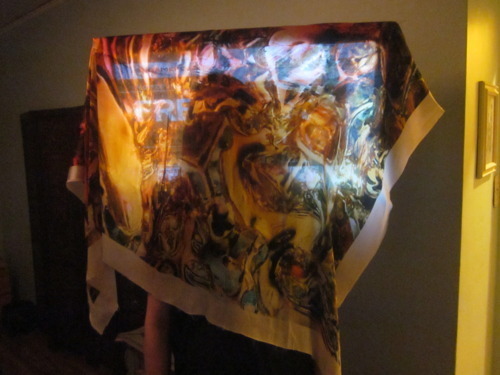
*** This interview was conducted, sporadically and distractedly, between June and September 2011. Parker was, variously, in London, Sussex, Malmö, Berlin, Venice, Tokyo and Los Angeles. Sarah was in some but not all of these.
http://parkerito.com http://deke2.com http://oliviacalix.com http://jstchillin.org http://paintfx.biz
http://flickr.com/photos/soppinggranite http://yearofthehare.org http://oliviacalix.com http://aquaage.tumblr.com
15 notes
·
View notes
Text
PERSONAL BIONICS
24 notes
·
View notes
Text
Artie Vierkant
In conversation with http://artievierkant.com/

Still from Image Objects series, 2011
<![CDATA[// <![CDATA[ if (WIDGETBOX) WIDGETBOX.renderWidget('eeee2a47-8724-40cc-bc6c-f7d6b0d218d5'); // ]]]]><![CDATA[>]]>
Issues of materiality, or more precisely the reification of digital entities, seem to run through your work (I’m thinking particularly of Untitled Videos, Monochrome Arc and perhaps even Cairns here). Do you think we learn more about the character of these digital entities through such translation into the physical world (and vice-versa), or is this aspect of your practice more of an attempt to transcend the virtual? How much is the relationship between the virtual and actual worlds a concern of yours?
Actually I often find the opposite — increasingly I feel we learn more about the character of physical entities through digital means. Or at least a huge amount of the things created in a digital environment (if such a designation is important) are quantifying or augmenting things that already exist. For instance, every tree in Paris is now equipped with an RFID chip. For the moment that mostly means we have some sort of efficient database / cataloguing system set up to help us maintain these trees, but as the technology gets more advanced that data will get further and further imbricated into how we conceive of “tree”. So suddenly not only is an object tagged with some unique identifier and a little package of metadata: it's also sending and receiving signals, interacting with other objects moving around it, and in some way affecting how we interact with it.
I think this kind of virtual-physical relationship in particular interests me, the degree of augmentation or representation that succeeds in actually changing how we think about or interact with an object. This way we can concentrate on building layers of infrastructure that effectively create new spaces.
Within this, however, I sense also a certain fragility, highlighted by your use of styrofoam in your sculpture. What is it about this material that attracts you to it?
I was initially attracted to styrofoam as a material after a lifetime of seeing formed styrofoam used in packaging. There's something weird and interesting about those styrofoam shapes as negative space formed to compliment the shape of different products. In kind of a similar way, all of the cuts in my styrofoam sculptures are from brightness levels in frames of video, so you're seeing a kind of shadow or complimentary form instead of watching the video.
Speaking of those styrofoam pieces for packaging, I remember seeing in my Google Reader images of a really interesting installation using a bunch of them stuck up against the wall. If anyone remembers seeing this too and has the link, my email is [email protected].
Are these ‘negative spaces’ the same ‘new spaces’ in your previous response?
I think the 'complimentary form' I mention is the same idea as the 'new spaces'. When you add a bunch of digital information to objects that are already produced or exist somewhere in space, you create this other layer to them in much the same way that a digitized image is able to be analyzed quantitatively for all of these different facets—brightness, bit depth, resolution, three-dimensional structure. So, in the styrofoam sculptures for instance I can take a certain predetermined form (a video) and completely alter the method of display or playback to arrive at a new form that was always in some way there, but now is very well articulated in the structure of the image itself. I think this has the potential to expose certain things about the form underlying something relatively intangible like video. It doesn't even really have to be rendered sculpturally, as I do. You can get the same experience by picking any one variable in an image's overall makeup and charting how that changes frame by frame. A lot of people are doing this now to micro-analyze large chunks of cultural objects for research purposes, but I think there is also a lot of aesthetic or poetic potential to these ways of thinking about objects.
Though when talking about 'new spaces,' I was also referencing things like augmented reality (or some variant). Ways of using, let's say architectural space, in a way where suddenly its uses are more flexible. So far these uses are often closer to following a museum audio tour or having a heads-up-display overlaying Yelp ratings. But as these things improve you can imagine entire public spaces that don't have a lot of distinctive ornamentation, but instead display different things based on the subject moving through the space.
This is a bit sci-fi idealist, but well within the realm of possibility. What's most recently fascinating to me is the number of free tools for essentially creating post-production augmented reality. I guess that's just an overwrought way of saying “visual effects” like in films, but for instance this really caught my eye recently:
Demo of tracking workflow in Blender from Sebastian König on Vimeo.
I think the last century has done much to highlight the extent to which science fiction informs our culture and society; virtual reality being just one example of a technology that has evolved as much through imagination as through science. You have recently been involved in the * new jpegs * show in Sweden. To what extent does this show correlate / overlap with your ongoing theorising of the Image Object?
We went into * new jpegs * wanting to make a very object-based show. I think pretty early on we decided to then take the documentation of those objects from the show and alter them into a bunch of new images (which might end up not even looking anything like the originals) to essentially create new pieces that would have a life only as images. This part of the show hasn't really surfaced yet, so if you look on the Johan Berggren Gallery website all of the images there are straight shots of the show.
The concept of the show pretty directly overlaps with what I've called the “image object.” A big part of the idea is to assert that there really isn't that big of a difference between experiencing something through the image versus seeing a produced object in real life. So in this show, we get to play with that by making viewing the image documentation the more unique experience. You can equally see the gallery documentation as go to the show itself, but the altered versions of the same images that surface later are things that you just couldn't make physically.
I do more or less the same thing in my series of the same name, Image Objects, (two pieces of which are in the show), except usually I try to actively suppress straight documentation of those pieces. The idea there is not just to make seeing the pieces “in person” distinctive from seeing them blogged around online, but also to assert that when you see how they look unaltered you can't help but associate them with the various versions you've already seen.
What's interesting is while all of us in the show — myself, Chris Coy, Parker Ito, Jon Rafman, Ben Schumacher — are all interested in image dissemination and alteration like this, we all go about it in really different ways. Ben creates these really interesting collaged layers over his install shots, and then documents everywhere they end up disseminated on the Internet. When Jon finishes a print-based project, before it's even produced he'll start disseminating an image of the print photoshopped onto a blank gallery wall. Parker's Parked Domain Girl paintings involve him versioning the same jpeg over and over until his personal brand can overtake or become synonymous with one of the most widely-circulated images on the internet. And Chris is really deeply invested in post-production as a theoretical format — the sculpture he sent is holding one of his new Pseudochrome paintings, which are a chroma-key greenscreen color with white tracking markers in the corners. So they're made with the specific purpose of overlaying other images or video on top of them in post, rather than holding a fixed image in the frame.
Running through all of this is an exploration of a post-medium condition. If your image object is post-medium, and therefore looking to surpass issues of materiality, what might it replace these issues with? For what reason the emphasis on the image as a central focus in a post-medium environment?
The “image” in this case is a stand in for any kind of mediation, really. So it's not so much a focus on the still image as the forefront of cultural exchange post-medium, but moving images, audio, any kind of media that could readily be transformed into other media. You might say “it could just be 'image' instead of 'image object', then” but I think calling it “image object” actually ties these intangible / immaterial digital files to the fact that they are material.
The biggest issue is that for certain things we're going to need a different sense of materiality. I think this is already happening. People in Internet-saturated countries already have profoundly different senses of what it means to “own” an object than before. Now ownership means access, instead of dominion. This makes sense as a cultural object has profoundly less use in the form of, say, a DVD stashed in someone's personal collection, than it does being widely and immediately disseminated. One of my favorite images from the last century is this illustration by Harry Grant Dart that ran in Life Magazine in 1911:
I think this is kind of incredible as it really accurately captures the “media center” mentality that over time has gone from being a fixed “home entertainment system” to a culture of small portable devices. The man in that illustration is listening to the opera, a news service, has a stock ticker in hand, is projecting a moving image (which lets him have a live video feed of his son, golf matches, and what's going on at “the office”), has ordered food, and even has something holding a book for him. As hokey and exaggerated as this is, it's still a nice way of looking at what we take for granted now. The post-media condition, if anything, gives us a way to break away from the very confining realm of personal information ownership. Or at least have all of these various things compressed into such small and overlapping space that we don't fetishize each piece of media individually with its own box and cover art &c.
Is there such thing as an image subject?
Maybe that could be one way to talk about artificial intelligence. Or “image subjectivity” would be what happens when you reiterate an opinion. I don't know if that's a road I would go down theoretically, but I would say that given enough time the interactions I was talking about earlier between objects in the “Internet of Things” -- active RFID enabled objects — could be seen as a subjectivity. Maybe that's an “object subject.”
All this ties in neatly with your citation of Lauren Christiansen in your Image Object Post-Internet essay - with this changed emphasis on the materiality of the object, it seems important to stress that ‘transmission becomes as important as creation’. Yet how are issues of transmission affected by the conceptual, minimalist aesthetic in your work as compared to the more obvious meme-friendly aesthetic perhaps more popularly associated with internet practice?
I think the distinction between my work and being meme- or Internet-friendly all depends on how you look at things. The kinds of traditions my work steals from (or “is aware of”) — minimalism, collage, conceptualism, structural film, &c. — are all pretty much just memes as well. If anything, because of what I take from it's actually unintentionally internet-friendly. This kind of makes sense as, if you look at the big sites for Contemporary Art aggregation on the Internet (the VVORKs and Contemporary Art Dailys and Mousse Magazines) 90% of that stuff is really low-risk and easy to share around. Not that that's necessarily a bad thing, that's kind of what those sites are for.
Now that VVORK and Contemporary Art Daily got Google Alerts for this I wonder if they'll never post me.
Conversely, maybe if we write really nice things about them here they’ll repost this? (Low-risk sentimemes.) The practices you refer to as memes here represent a moment of compromise, or balance, between formal simplicity and conceptual complexity. Maybe this is the intelligent use of memes on the net.
I like this term “sentimeme.”
Unnatural History have drawn the comparison between your essay and Benjamin’s Work of Art in the Age of Mechanical Reproduction. For me this is a highly politicised essay, or at least one that sketches a highly politicised role for the reproducible art object. To what extent do you see political issues within your own work, or in the wider practice of post-internet art?
Politicised is a good way to put it. The problem I have with my essay The Image Object Post-Internet, and with much of art in general actually, is in how narrowly utopian it all is. This is encapsulated a little bit in one of the first footnotes, which is just a link to the wikipedia article on the global digital divide — in short, the massive disparities between developing and developed countries in terms of Internet availability, use, and the rate at which these countries can catch up. There's a tremendous social and class problem here when I'm a young white male from the United States writing about the ubiquitous authorship the Internet affords and glossing over how completely uneven things still are.
That said, the essay is politicised in the sense that I'm writing towards something, and laying out in brief a set of ideas that I feel are very important in culture moving forward. I honestly believe that we are set on a path towards truly ubiquitous authorship. We just have to avoid catastrophe first.
Brad Troemel, a few years ago, really liked to cite this statistic that something like 98.9% of public libraries had Internet access. That's just here in the United States and not globally, but if we really think about it at the moment that percentage doesn't nearly extend to access to tools like Photoshop or video editing software, though this is really quickly changing. What that 98.9% figure gives us is the ability to fulfil something Benjamin talks about in The Work of Art — every image, every story, every idea has the ability to become “an object for simultaneous collective experience.”
An interesting aspect of the Image Object essay was its submission in itself as your jstchillin project. We have seen a clear trend in artists become critics alongside their practice in recent years, might this suggest a turn towards art as, simply, critical analysis? With art's 'expanded-field' ever widening, this might represent the purest (not sure that's the right word) form of art, at least conceptually. Further, what relationship do you perceive between your artistic practice and this more critical, evaluative work?
Part of why I wrote the essay was just to concretely state some of the ideas and concerns I was thinking about in art making today that I didn't think I saw coming from other people. There's a lot going on right now, and at least at the time of publishing the essay there wasn't quite as much written dialogue happening among a critical subset of very young non-jaded artists. I wouldn't say that the essay itself was a piece of art. I swapped it in deliberately instead of publishing a web-based artwork so that a community might see it and talk about it. Otherwise I'd just be posting it to Facebook or my own website, which doesn't volunteer itself to being read as much as releasing a piece of writing as part of an exhibition series.
I think sometimes people can forget that with tools like their computers they have the ability not just to make any kind of image or video or whatever, but also to share a profound amount of ideas. This is probably why the essay covers a lot of ground, just to highlight some issues and promote debate.
I don't tend to think of my work as solely critique-based, but most of what I do tends to stem from being preoccupied with the ideas we've been talking about. Sometimes the correlation between the ideas and the artwork is more direct than other times.
Avatar in 3D poses crucial questions about the intrusion of representation into physical space. Do you see this inside/outside dialectic as working on a strictly formal level, or do you think three-dimensionality has wider discursive implications?
I think things like 3D digital presentation (I don't even mean in a glasses-movie-theatre kind of way) has serious implications on the future of image making and our everyday lived environments. But at the same time it's kind of interesting because there is absolutely nothing 3D about the vast majority of what I make.
Even the Image Objects series, which are these sort of sculpture / print hybrids are built to be photographed and flattened. My video AVATAR IN 3D, too, is in no way 3D. I think in large part a lot of my generation are so used to dealing with flattened images of real objects that the actual dimensionally doesn't matter so much, it's more about how the image suggests space or dimensionally. Like Jon Rafman's Brand New Paint Jobs, this is all 3D rendering software being used to allude to space.
Someone once offered to help me make and screen a 3D-glasses required 4K resolution version of that Avatar piece. I'd still be really interested in doing that, though AVATAR IN 3D in 3D in 4K maybe doesn't have the same ring to it.
I think the emphasis on everyday lived environments in significant, and goes back to your concerns over post-production augmented realities. Even alluding to these conceptually begins to shape them as our lived reality (again, the cultural role of science fiction).
To focus of the past as much as the future, you have work on ubuweb and your essay has been archived at both AAAARG.org & cont3xt.net. How important is digital archiving to you?
Archiving in general is very important to me, and I think digital archives online just happen to be the most amazing way to do it. I have tremendous respect for those institutions, especially UbuWeb and AAAARG as they're entirely pirate archives that jumped in to fill massive voids in our ability to access some amazingly important pieces of culture. If you haven’t read it, Kenneth Goldsmith’s (founder of UbuWeb) open letter to a group of hackers who were targeting their archive provides a really interesting glimpse into the workings and ethics of Ubu.
I’ve been reading a lot of Mark Fisher recently. Through Eliot, he comes up with this great sentence: ‘The new defines itself in response to what is already established; at the same time, the established has to reconfigure itself in response to the new.’ I think this is a neat way in which to marry this concern over archiving with this exploration of future (cultural) landscapes; Fisher locates it within the the relevant political dimensions.
To change focus to language, you use a great deal of forward slashes in on your website, a structural and textual device that has always intrigued me. Aside from the aesthetic quality of ///////////////, what do you think is it that appeals to you?
To be honest it's just something I started doing. I have a bunch of drawings I've never released that are pretty much just huge pieces of paper with repetitions of that form.
I do, however, remember being more drawn to the form once I heard about how Tim Berners-Lee, who created the world wide web system, publicly apologized for including the “//” in the “http://” formatting because of how many extra keystrokes it's caused everyone.
On a less elevated note, but something that has been at the back of my mind since becoming aware of jazz a few years ago (Art Pepper, Art Tatum, Art Blakey, Art Farmer), do you think there is a link between having a name such as Artie and becoming an artist, or is it just a happy coincidence?
I would hope it's pure coincidence. But then my last name is also Vierkant, which means “square” in Dutch, and that kind of fits my aesthetic. So maybe that set up my destiny.
!! +1. Have you come across any good sites lately?
A little while back a former student of mine shared some of her new work with me and I've been so into it. Her name is Adriana Ramic and her portfolio is here: http://69.12.181.95/ Also: Tahrir Documents - http://www.tahrirdocuments.org/about/ The Small Crowd Gathers to Watch Me Cry production blog - http://smallcrowdgathers.com/ This video, in which the teenage creator of the “51 things in my room” meme expresses the pressure of having subscribers -
Still from Image Objects series, 2011
http://artievierkant.com/
15 notes
·
View notes
Text
Adidas made me hardcore

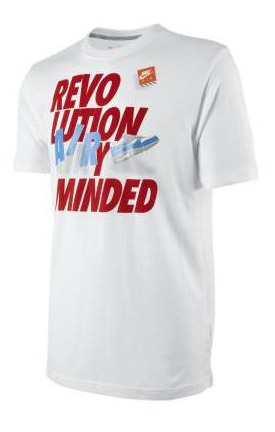
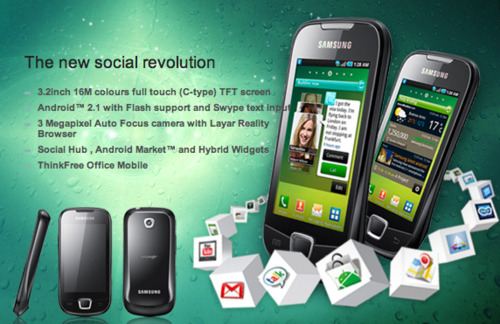
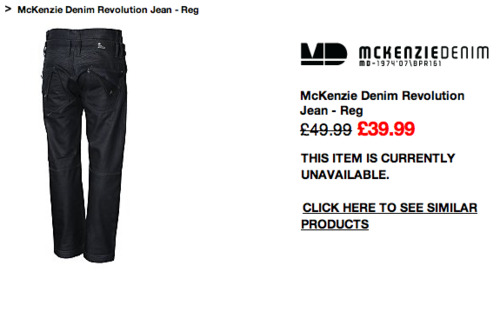
'Looting is a natural response to the unnatural and inhuman society of commodity abundance.' S.I. December 1965
#uk riots#prosumer riots#adidas made me hardcore#adidas revolution#nintendo revolution#situationist international#london riots watt riots
5 notes
·
View notes
Text
Iain Ball / Emily Jones
In conversation with http://energypangea.org/
Rare Earth Sculptures : Neodymium 2011 E N E R G Y⋮P A N G E A
Your current focus is on your Energy Pangea project. What appeals to me about this is the breadth of content and material of which the project consists, marrying aural, visual, tactile and conceptual elements (‘gesamtkunstwerk’ 2k11?). To what extent is this totalising and intersensory concern an ambition of yours? We just got back from Mark Leckey’s show at the Serpentine Gallery: See, We Assemble. The thing that struck us about this show was that it was inextricably ‘Post-Internet’. Leckey had himself expressed his dislike of the term ‘multi-disciplinary’ - the thing that made the show so post-Internet to us was its ability to transcend its own materiality within a cross-section of information; with the show’s sponsor Samsung as a medium, Henry Moore or the ‘idea’ of modernist sculpture as a medium and the Serpentine itself even addressed as a medium. With Energy Pangea we want to present a myriad of material that uses media convergence as its primary weapon, in the sense that it feels impossible to just make things that are self-contained and at the same time there is a struggle to do that very thing : to make the perfect self powered artworks when all that is solid continues to melt around us. This is why the central focus is sculpture, because it’s a perfect idea of an artwork that has so much authority but at the same time is surrounded by a quantum fog and the way we process things now is never in any one place, but always with multiple connections and contexts. When we use the Internet we are exposed to a spectrum of material sourced from many different places that collides together and we really want to make sense of this, so it’s very much about about processing the idea of an artwork within this landscape.
There is also a strong emphasis on music here, echoed across your practice. Does this further reflect the themes of the previous question, or are you trying to achieve something more with it? I pick up on this particular element of the work because music seems to have a certain potential for autonomy - it’s a format that can recontextualise itself with simply the creation of a playlist or cd. The music for the post.consumer.cult project appears as a playlist at the bottom of the page, would this be something we might see happen in Energy Pangea? Inherent in playlisting is, for me, a potential for work to reassess and reimagine itself, a potential I see as not without parallel in your practice.
There are strong influences from films like Baraka; film is a medium that can tie in a lot of material so soundtracks are quite necessary. All of the Rare Earth Sculptures will eventually have events that also work as documentary films with soundtracks. I think that the experience and place of sound is especially important in a sense where it has to be tied into some kind of event or experience for me to get excited when producing or directing it. Since 2004 I’ve been involved in a sound and visual project with Clifford Sage called Communicvoid which is always chaotic and process based and often executed as site-specific. Between 2005-2007 I worked almost entirely in sound and then began working with it again recently because I realised that convergence meant that it was somewhat unavoidable. Clifford Sage made the soundtrack for post.consumer.cult which was really the final ingredient in what I came to see as a content cloud that pulled in anything that was relevant to its argument and then went through a refining process.
I think your reference to a content cloud makes perfect sense in relation to the 'all that is solid' quote in your first response- it perhaps points not to a realisation of the impermanence of matter, but the manipulability of matter. Heterogeneity becomes a powerful concept in this context. All that is solid might melt into air, but then it finds a new form in the iCloud, where it might easily be realised as a solid (sculpture) once more or take on a different form entirely. I take this all to mean that the Energy Pangea project might never have a finished or terminable state, but will always exist mutably and in flux. Is this true? Further, I like the idea of the sculptures becoming events and then films, it gives the project a rhizomatic appeal. Would you ever consider incorporating an interactive aspect to your work?
Yes, totally, most of the work exists as malleable ideas, where content can be added or changed because its never set. Dates usually just give authority to a piece, by having a date next to the work it looks nice, but it’s useless attributing the date to a time when the idea was conceived because ideas and titles and content can always change whether you are having to adapt the work to suit changes in html and browser formats, show in a gallery or develop new understandings of the work and how it should take shape though new research.
All the work is interactive because people take the content and use it in their own work and vice versa but I don't try to make it interactive. Interactivity is too functional and utilitarian a concern for me to set out to make a piece of work engaging on an interactive level. Is there an ecological aspect within the work? I know Emily is involved with the Year of the Hare project, to which questions of ecology might seem more relevant, but to what extent is Energy Pangea likewise influenced by these themes? What I find interesting about ecology, or what has been termed ecological information, is the way it has been theorised into Fluxus experiments of the 1960s, called upon as being a radically new, experiential model of knowledge for western epistemology. Within this is the idea that ‘information superhighways’ can transmit any type of conceivable information apart from the ecological - thereby privileging this aspect above others. Might we find a similar, albeit updated, investigation within this project? I’m thinking of your emphasis upon ambience and environment.
I started Energy Pangea because I wanted to stop thinking that the world was going to end and start trying to imagine something else. The geodesic sphere that is the Energy Pangea logo represents this beautiful idea of nature as a self regulating system and the dream of counter-culture. Neither of these things are realistic anymore, so the geodesic sphere is there as a reminder of those utopias in the light of today’s turbo-information cloud, amongst confusions about information and politics. I also realised that I couldn’t really address things as synthetic or non-place in the way that I had been able to in earlier work; I felt strongly that there had to be something else, so I turned my attention to other things. This focused on the collective human action as a wide-spread and emergent system based on the idea of ‘new energy source’ in a kind of meta-ambiguity; and with this I became interested in using materials like wood and wearing more earthy colours. None of this has much to do with ecology as a science, but there are many aspects of art-making which are oriented around ecological philosophies. We both had an education that was based on a Beuysian/Social-Sculpture model for art production which has given us an urge to push many aspects of ecologically motivated art that seem old fashioned into estranged and slightly uncomfortable territory whilst still maintaining absolute seriousness about what we are doing.
How do you then see the other, very diagrammatic, rational and scientific aspect as working within (or against) this?
Everything today is characterised by uncertainty, none so much as advances in quantum physics; wave-particle duality, non-locality, the uncertainty principle, super-string theory and entanglement are all suggestive of the inner universe of though as a catalyst for potential, but on a whole despite these advances the mainstream scientific community still deny a spiritual metaphysical dimension to human understanding. The terms 'pseudo-scientific' and 'new age mumbo-jumbo' get used more than ever to describe all kinds of responses to these discoveries. It's high time to diminish irrational/rational binaries. We are focused on lost and ancient knowledge that has been eclipsed by the enlightenment and are channeling it through the language of an outreach project into the collective-information polymath, which has rational and irrational qualities
Neodymium is the only finalised sculpture at this stage of the project. Yet it is interesting as a sculpture because it perhaps verges upon the condition of an installation; a situation in which you have brought two different found objects with unique identities and repositioned them to create an intended new meaning- a process that seems relevant to the way a lot of information is created and processed these days. Would you say you're interested in the process of creation as much as the final product, the formal sculpture itself? Also, you link through to the Shambhala site on the Neodymium page, giving the sculpture a social dynamic, or at least creating links with the real world. Might we therefore begin to see features such as the user comments below the sculpture on the Shambhala page as part of the sculpture?
I definitely don't consider the piece as installation. To me installation is concerned with addressing the site-specific and spacial dynamics which effect the work. Post.Consumer.Cult, although made up of sculpture, collage, video and sound, is perhaps more focused on installation in its final outcome on a web page. I consider found material, objects and images as sculptures. For me, sculpture is really a choice in how the work is understood. When I was making Old Earth Objects, it took around eight months from the first objects being lined up, and I looked at them every day and slowly some of the objects were replaced with newer ones that I'd discovered which were more relevant to the refined idea of the piece, their positions were changed and the concept evolved. Effectively I sculpted the idea of the title. Taking some raw material and turning it into something new is a very sculptural process. As cheesy as it sounds, when we look at things we are sculpting because as observers we effect the material that is around us, to suddenly see something in a new way is a sculptural process.
With RES Neodymium the sculptural element is not so much in the healing tool as it's only one of the elements within the piece, which is intended to work symbiotically with the Lizard and the Neodymium Lamp. What makes it a sculpture for me is the mixing together of materials and ideas to create its argument. I think also, the back-story of how the healing tool was obtained is not relevant to its social engagement as an artwork because it only effects how the work was made and the link to the Shambhala site is really just to emphasise its position as a commodity. I feel that if it was considered to be concerned with social-engagement it is because it has an argument which is based on the dynamic forces of energy production, which it doesn't present in relative terms but, rather, has an agenda of sorts. But I think that its agenda was also conceived in a sculptural way and it's not necessarily important that the agenda is actually carried out by anyone - it isn’t really sure that it wants people to start worshiping the sun and revolt against sources of power obtained from within the earth, rather it wanted to play with these ideas and forms to create the aesthetic of an objective argument.
The complexity of the project begins to reveals itself when you think in levels of abstraction and reification, between the material, technological and economic (levels of distinction perhaps best summarised by the juxtaposition of iconography on the Europium page). What is the project’s relationship to economy; in short, to what extent, if at all, is the project politicised?
I think that a common misinterpretation about the project which we have begun to encounter is that we are somehow addressing issues such as global recourses and contemporary ecology in ways that are scientific or journalistic or we are taking rare earth elements as a subject which we are addressing in a literal and straightforward context. In reality these things are only taken as fragments of material in the abstract sense. In western society our approach to a visual anthropological survey of our culture is totally fragmented and misaligned because no one knows what to believe in any more. Adam Curtis said, ‘I'm completley modern, I don’t have politics’. I like to think that the project works from this standpoint.
My Nike LunarSwift+’s sit by the door at the other end of the my room, they carry the weight of all that we associate with the Nike brand, but the trainers themselves are totally abstract, if they didn’t have Nike printed on them and for whatever reason we assumed they weren't for wearing on our feet they would be a vessel encased in bright red mesh, florescent yellow rubber and shrouded in a kind of mysticism which we associate with the materials and factory processes from the late consumer age. The Rare Earth Sculptures work in the same way, they are given the stamp of the ‘idea’ of Rare Earths and they are cloaked in this term ‘Energy Pangea’ but this is tactile material too and connections form in the same way as do neural pathways and without necessarily connecting to any preexisting idea we have about rare earths or energy politics. I think there has to be an element of altered or processed thoughts out into the world based on what knowledge we have and in some ways it contains a certain naivety or distancing from those subjects which is necessary for the critique.
Yet perhaps you still enter into some sort of discourse on globalism? Foreign policy is becoming more and more dictated by the availability of certain minerals crucial to information technology - for example conflict in the Democratic Republic of Congo has been massively exacerbated by the country’s rich supply of coltan. It is a war that is at its heart an ideological conflict. What's more it has been suggested that up to 97% of the world’s rare earth elements are mined in China, a country politically at odds with the rest of the world. What therefore can we make of your interest in branding, NGOs and corporate globalism? Are there links here to the Phillips 2013 project?
When I was working on Philips2013 I became interested in how I could distort the brand image by making new connections and associations that were either a hyper-extension of pre-existing intentional or unintentional aspects that make up the Philips corporate image or completely new material that was brought in. Most potent was the play between Philips as bringer of dreams and bringer of death and I took the CT Scan images as a starting point, as representative of a contemporary dance of death through the way that they have presented us with our own mortality from a clean and technologically advanced medical standing. Then the central idea became focused on a way of presenting Philips as a global phenomena involved in a mutated business practice which was absorbing divergent groups into into the common relationship of Philips products.
Many of these themes developed into Energy Pangea but the focus became more about resources, energy and primitivism rather than consumer electronics. This was centred on two things. The first is to find ways to present a version of the global energy debate as a central component of the limbic system, using the reptilian brain in revolt against the neocortex as a way to develop an alternative energy supply; this is a long term goal. The other is a rejection of the modern world- likewise a long term goal, and the reason why Energy Pangea is something we aim to be working with as a major practice and research project for the foreseeable future. These rejections of modernity concern themselves with an inquiry into non-western belief systems, Eastern metaphysical doctrines and the creation of new primitivist think-tanks that embrace advances in technology. In general, we see a concern with resemblance of primordial debris to assist in providing an alternative to the implosion of the west by embracing tribalisms, ritual and initiation coupled by modern technology and scientific discoveries. Using the 17 Rare Earth Elements effectively provides us with a platform that ties together a diverse range of ideas into a sub-section of the periodic table.
In rejecting the modern world, do you envisage a viable alternative, or are you more interested in the truth procedure by which such an alternative might be revealed? (Might we argue that a goal of modernism was equally to transcend its contemporary age?)
Much of the fascination I previously had for western culture was centered around ideas Walter Benjamin articulated in his Arcades Project: that mass culture is a dream world, but it is also a hell in a state of permanent decay. I've tried to present the dichotomy between dreams and death and its symptomatic by-products: alienation, synthetics, de-realization : all of these also work as euphoric experiences of the world so there was a play between the two in how conference centres and service stations feel. Now I have a stronger distaste for western culture, I don’t feel like I’m in a dreamworld when I’m in shopping centres and after reading the continuum concept I have no faith in the medical establishment, the education system and the monetary system, or many of the ideas that seek to replace these. I’m dissatisfied with Marxist-Left critiques of postmodernism so recently have become interested in the radical Traditionalist movement. I think what excites me about these ideas is that they are dangerous and yet totally different from the ideas of the left. I’ve started looking into the work of Julius Evola, who was affiliated with Dada and later tried to influence the Fascist Party. And also René Guénon who converted to Sufi Islam- the whole phenomena of western converts to Islam is fascinating to me. I'm not sure if the goal of modernism was to transcend its contemporary age but rather to develop it along western concepts of technological and social progress, whether from the economic left or through free market capitalism.
It could be argued that what we are doing is apposed to postmodern relativism and cultural-implosion, but I’m less interested in distinctions between modernism, postmodernism and new terms such as super-modernity - it’s really all just the modern world when looking at things from a zoomed out perspective. A simplification of this in manifest could be boiled down to 'It looks modern, but on closer inspection, it isn't'. With the Neodymium Rare Earth Sculpture there were elements which suggested a rejection of reason and modern scientific rationalism, and it was also focused an unsustainable and un-progressive technology. At the same time a meditation on the sun as the source of life is presented as more technologically advanced, sacred and perennial.
Is there room for mysticism in the internet age?
Not since Adam Curtis, Facebook and Lil B. All the notions of technoshamanism have disappeared, and I don't say that with a sense of nostalgia. I’m anti-immediate-retro; it’s all about 7000 years ago in Sumeria.
Could this project exist without the internet?
Like many people, I suffer from the slightly melancholy notion that nothing exists unless its on the Internet. I don't know how to transcend this feeling, when a technology becomes part of our lives it’s always hard to imagine what it was like before, before the like button, before the internet. I’m always amazed when I meet artists who don’t use the Internet, I get slightly envious and wonder how they function.
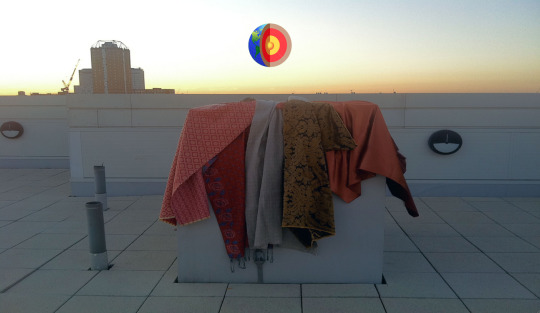
Fabric test for the development of Rare Earth Sculptures : Dysporium 2011
http://energypangea.org/
10 notes
·
View notes
Text
Sam Riviere
In conversation with http://austerities.tumblr.com/
Your output is prodigious - a collection of 81 poems shows a remarkable dedication to a theme, not least one of cuts and austerities. In an earlier interview I discussed the work of Travess Smalley as a ‘performance of producing’, would you say a similar sentiment is relevant here?
A lot of poems I enjoy seem to want to 'perform their production' in some way. Maybe no-one can ignore the fact they are declaring they are writing a poem when they're writing a poem anymore. I enjoy getting an impression that the poet hasn't decided what they think or where the poem is going too much, that they're surviving line by line. As the starting point of the Austerities project was to deprive the poems of some characteristics one might expect poems to have (things like metaphor, 'poetic' language generally, concerted image-making), the struggle with these imposed limitations is the basis of each poem and its 'performance' on the page/screen I guess. I like having that sense of adversity. I wanted to write by theme, to produce almost excessively and repetitiously, and give the impression that even subject matter could be an arbitrary decision, so then the method, the 'mode of production', would have to be the point of the project. I try to draw attention to this with things like the sloganeering and largely irrelevant chapter titles, and the recurrence of themes such as advertising/arts funding where content is secondary to the primary task of the text, which is fiscally orientated. Setting yourself a subject or something random-seeming like that doesn't in my opinion prevent a poem from having an improvisational honesty, which is probably as much to do with how/what the poem *resists* meaning. I guess a willingness to test your flexibility or slipperiness in this way seems like a genuine risk. It's like having to somehow extract yourself from a situation or argument and leave it facing the reader. Like if this was a poem I feel I'd have to contradict these assertions at some point. I don't know. This is my third attempt at answering this question.
Ha I saw them as they came and went on the google doc. How would you say your use of tumblr has aided you in regard to the above? In essence this becomes quite a simple question- what are the advantages and disadvantages you have encountered in using a web based rather than traditionally print based medium?
I'd written/found the poems before I began putting them online, so my use of tumblr didn't alter the composition of the poems, but it has led to some other material being attracted to and clustered around them. It's become a more involved, denser project, with audio, images, video, incidental poems responding to the poems 'proper', and so on. I originally envisaged something much more sparse, 'austere', I guess, and saw tumblr as not much more than a convenient platform. If you develop a blogging habit though suddenly there's material everywhere, as if it's drawn to you somehow. As with approaching writing the poems, I want to be open to contingencies, developments, reactions, have the power to pre-emptively criticise the work, and incorporate this stuff into the project as a whole. It's funny that after I wrote a disposable short poem about reading an unauthorised biog, other places publishing the poems became nervous about how they commented on the project, in case they ended up as part of it too. Strange that having a blog could potentially paralyse criticism, a bit like having your own media empire. So I guess probably the disadvantages of online publishing – losing control over the work, etc – can be viewed equally as advantages.
I like the ‘material everywhere’ observation. Certainly something I’ve found is that the more blogs I’ve become involved in, the more of the internet has become available to me, if that makes sense. I think you begin to surf much more actively with each additional curatorial interest, and perhaps this is even reflected in your day to day living / your ways of engaging with the world. Essentially blogging platforms such as tumblr help us visualise the networks and connections we create and exist in as social beings.
Do you see your poems as part of this wider networked dialogue - that is to say do you see your voice as adding to a wider microblogging conversation - or is your choice of medium more of a formal aid? And in this vein of thought, of a web based project being necessarily located within an ‘internetwork’, to what extent would you say interviews such as this, as well as dissemination of the work in other blogs and forums, inflect or augment the project?
The poems were written outside of that environment, and with what became quite a specific intention to respond to the arts cuts/austerity measures, alongside what's I suppose seen as the dominant trend in mainstream British poetry. The poems try to play out feelings of ambivalence about those connected situations, bringing in aspects from other domains I've already mentioned as comparisons, or as analogous industries. So no, the poems weren't produced within or for an internet community such as tumblr, but I hope they don't look too out of place there either. If they don't this might be something to do with the implied impermanence of a blog post, that you can kind of have it both ways, publish the poems and also delete them later if necessary. The poems constantly defer/contradict their positions, and the medium of a blog may aid the presentation of that. Perhaps one of the reasons that 'supporting material' has become important to this project is to do with my becoming aware of other poetry projects on the internet (blogs like http://internetpoetry.tumblr.com orhttp://poemsvsvolcano.tumblr.com) and realising that immediacy is basically a necessity... If people are going to be interested enough to look into your work online in more detail, they have to 'get' something of the premise within their minute-or-two average first visit to your page. I'd invite interviews like this one and other stuff to be viewed as part of the overall project, as the notion of confusing its final 'value' is in keeping with the point of it. In any case it seems disingenuous to insist that the poems should be viewed 'apart' from anything, when controlling that has never been possible in the past. I'd rather assume other texts will be dragged in and approve of it. Having said that, I think it's appropriate for a proportion of the core poems to end up eventually as an e-book or in print, where they might be viewed more specifically in the context of a poetry publishing tradition, as a comment on and mutation of that.
Are these concerns reflected in the form and content of the poems themselves? Something that stands out clearly is the absence of punctuation- what would you say is the significance of this device?
Yes. I wrote about generating content already, a fair amount of which is found or written/suggested by friends, and the poems can be organised entirely by theme. [http://austerities.tumblr.com/post/5269877400/contents-by-theme-81-austerities-2011]
The title can be seen as the subject and governing principle. The method of producing is largely via reduction. Poems about inspiration become perhaps poems about poetry competitions and arts council funding. Poems about love become perhaps poems about devalued objectified desire or poems about longing for products. The idea is to negate the 'poetry' value and see what remains, both structurally/thematically, and in terms of 'heightened' moments in language, which in my opinion still occur. The results could be seen as critical or celebratory or perhaps both. There's enjoyment and danger to be found, and the poet's complicity in this is countenanced I hope, especially in the overtly gendered pieces. Taking this idea of deprivation as a given has been quite productive, which maybe says something about writing/making art generally... that it always happens because something's absent. Ambivalence becomes a kind of potential. The form of the poems try to enact this as well. Absence of punctuation is a fairly direct limitation, but it also allows meaning/syntax to become occasionally fluid or flattened or unfixed, which is helpful when you might want to suggest something but also avoid committing to it. Other formal decisions gesture at arbitrariness – 'shape poems' that make quite unsatisfying shapes, poems where the lines get longer or shorter and in no obvious way emphasise the content other than its selection.
You upload the poems as image files, which basically means the text is not interactive - it can’t be copied, pasted or manipulated so easily (perhaps this is an indicator of absence also). Do you find this helps shape the character of the poems?
Drawing attention to the appearance of the poems when the appearance is seemingly random means drawing attention to the poems' surface-ness. The poems could all be arguments with/about depth. In this sense it makes sense to upload them as jpgs, completely flat images. Maybe it makes them feel impermanent somehow, like they're clones or reproductions of the 'original' thing, with a kind of limited half-life. I like the idea of the poems being receipts, kind of. Just a record of their production, the fairly short window of time when the poem is alive and arguing with itself, resisting a single conclusion or meaning. The first writing in the world was probably basically a receipt. Evidence that something has been transacted. Maybe writing retains that function at a basic level. I like the idea as well that they are artificially made products, they've been produced 'privately', in some invisible backstage or factory, so there is a kind of mystery about their origin. You are never shown where a product really comes from are you, but there's normally some ridiculous bullshit mock-production scenario in a cereal or beer advert that you're clearly not supposed to seriously believe. I think I can only write/compile the poems like that, something to do with avoiding taking responsibility for some of the content probably. I couldn't write even this interview on google docs as we planned, I'm writing it in word.
For me this is a return to the idea of commodifying emotions, which Carmen Hermosillo so powerfully foresaw. The idea of receipts ties in neatly with this, it's completely arbitrary in a system such as facebook, or any internet forum, what information we trade; it's the repeated nature of this transaction that empowers these internet corporations and perhaps alienates us, and I think the poems to an extent reflect this. There's certainly a tension here, between these shiny, two dimensional artefacts you talk about and the sense of honesty that clearly resides within them, honesty that I would locate in your poetic ‘voice’. What's more I think this voice is strengthened in it's juxtaposition with the more impersonal elements of the project such as, for instance, your interest in found film clips, with a looped and gif-like aesthetic. Should we see these as asides or as integral components of the project? Are these plays in contextualisation or something else entirely?
Yeah... the video clips are a bit like the chapter titles, they have a tangential connection to the main content. The looped pieces are about surface again I think, and the b&w disguises the origin slightly. I like the way the scenes or characters appear trapped inside the frame...they sort of thrash about a bit... I feel that way about the voices in the poems, there's something claustrophobic about them, like they can't not taste/hear themselves. Someone wrote that 'the intense attention to the self seems like a masked attempt to escape it,' reviewing my poems, I was thrilled something like that came across. The content for the clips was generated by searching videos using certain phrases or images hidden in the poems. The golden gate bridge is an oblique image in Crisis Poem. A Japanese AV actress appears/speaks throughout the collection as a sort of anti-muse, an opposite number to the figure of the poet/editor. The enraged swan felt like an emblem.
I kind of think that one of the empowering forces of these poems is an interest in, and exploration of, mediation. Yet is there, or will there be, any sense of resolution to the series? Resolution in the sense of conclusion, thematically or otherwise.
Content can be used to generate content, and though the series is a set length, I have an extra section already which contains critiques of each poem, summarised versions of chapters, poems composed of variations on the chapter names... simply mixing up the titles systematically has turned up video and image content which still feels usable, somehow in orbit around the 'absence' at the heart of the piece. I found a nice clip of a guy and his girlfriend filming a dust devil for example. I would like the precise radius to be unclear, and maybe start to fade into other work. I imagine I will become bored with the process, but I feel like there is a system for gathering material that I can perhaps focus differently if I want to. Maybe the final product is a method which I'll develop or apply in other projects. Part 9 I think though has the poems in it which are the best articulations in the series, and it probably reaches some sort of formal climax there. I think mediation is a good word for the accumulative effect probably. The process has felt more like that of compiling than anything else, in itself that feels like a discovery of sorts.
What is the sweet new style?
http://en.wikipedia.org/wiki/Sweet_new_style
– obviously I am not comparing myself with Dante. Every 'new style' seems to be one that punctures the perceived sententiousness of the previous one. This normally comes about by using in poetry a language that is emphatically non-poetic. Even Coleridge said something close to that. I guess I sense an impatience and boredom among poets I know with the prevalent mode, a style of English lyric that has started to feel pretty tired and generic. It didn't always feel like this, it's just been done too much and seems mannered and put-on. I would say that in some ways eschewing metaphor can be a way of elevating metaphor. Not writing imagistically can make the text imagistic. "The adoration of the female beauty is explicitly portrayed by the Dolce Stil Novo poet, who frequently delves into deep introspection." Dante thought the expression of the Lady in the Window displayed the most profound pity when she saw in his eyes his 'wretched state'. Of course we can't know what the expression of the Lady looked like, or if she correctly identified his feelings. That's if we assumed it happened. It's interesting to me the extent to we trust or reconstruct this situation, which has got to be about the oldest and most frequent occasion for poetry. It seems weird that the progenitor of this mode was probably Sappho, i.e. a woman. On one level Dante describes watching the Lady on a kind of screen, believing that she is sympathetic to his emotional state, that communication has occurred. It is necessary for the lyric figure to find an external image for his feelings of love, almost as if he has already decided on his condition and simply waits for an opportunity to invest in and articulate it. To what extent is the resulting poem (also a 'screen') the desired product of that situation, and to what extent would the poem be possible if the Lady for example spoke, are questions that still seem relevant.

http://austerities.tumblr.com/
19 notes
·
View notes
Text
holiday snaps
summer's here
second summer this year
#second life real life#cmd summer#it's a cmd summer!#gay shit#boobz#second summer this year#art second life
3 notes
·
View notes
Text
Untitled, 2011 (Free)
2 notes
·
View notes
